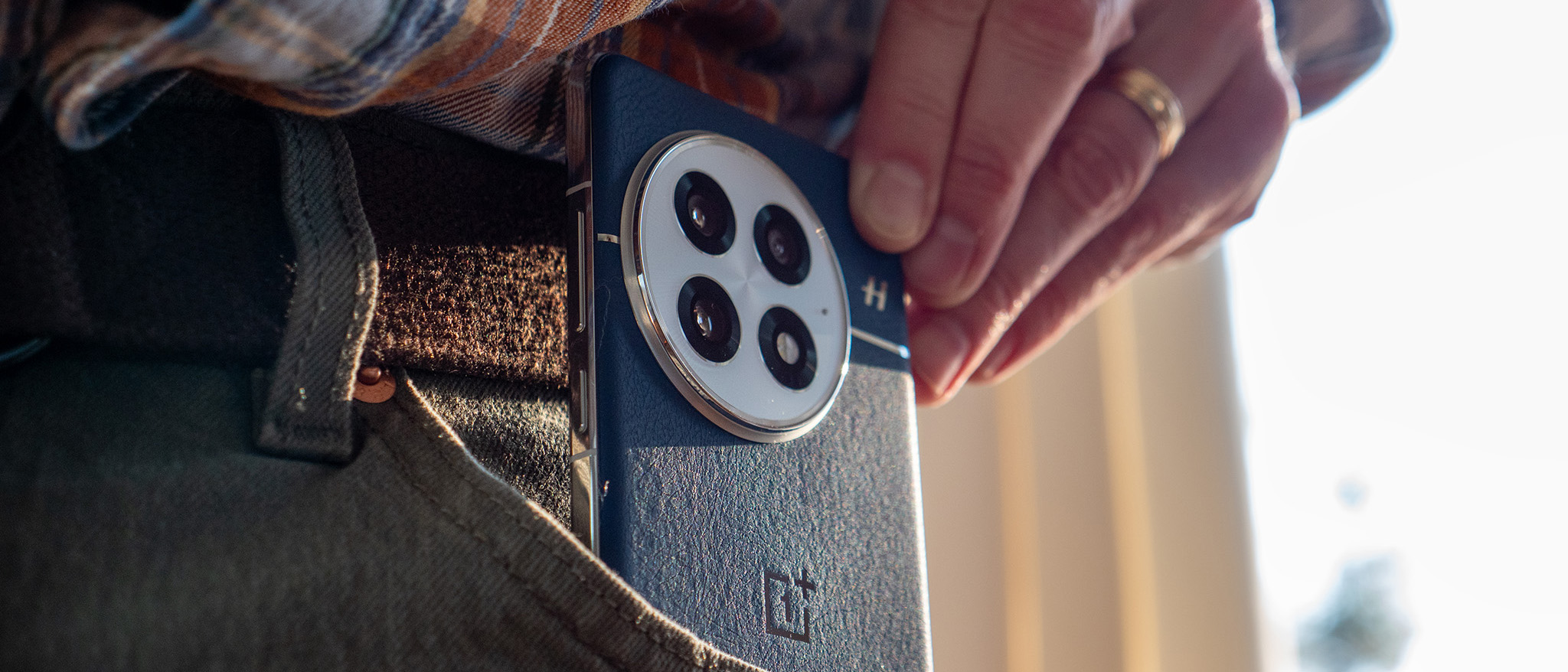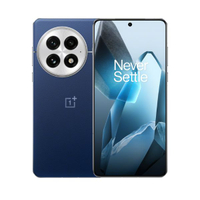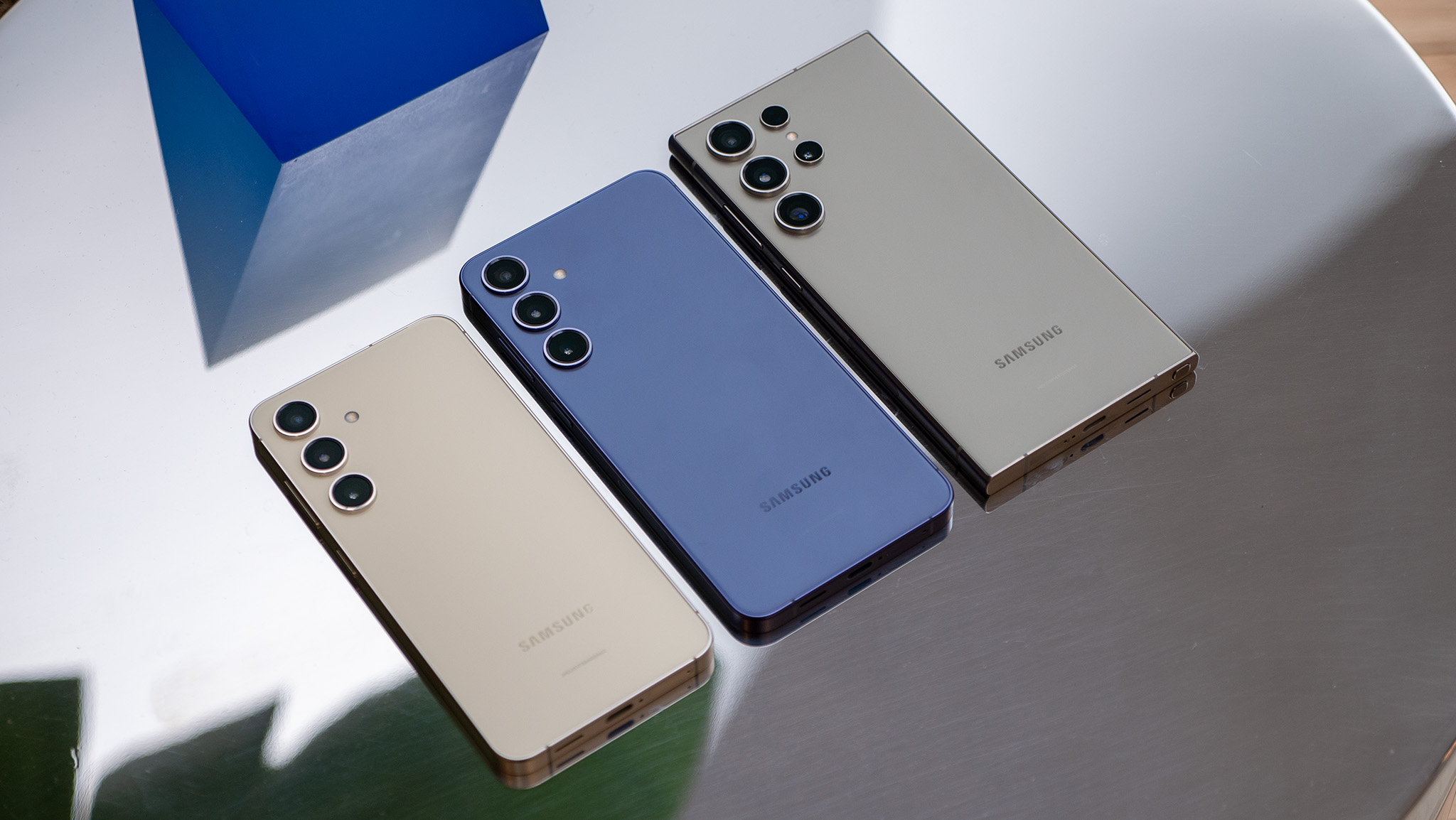Android Central Verdict
I've used a lot of devices in the 14 years I've been reviewing Android phones, but I haven't been able to consider one "perfect" until the OnePlus 13 came along. The OnePlus 13 does it all, from brilliant build quality and an eye-catching design, the first to achieve IP69 water and dust resistance, the fastest processor in any phone on the market, an incredible eye-friendly OLED with the industry's first Display Mate A++ rating, a giant battery with epically fast charging, Oxygen OS 15's amazing features, six years of software updates, and a camera that finally competes with (and often beats) Pixel and Samsung Galaxy phones.
Pros
- +
Fastest processor available
- +
Crazy good battery life and epic wired and wireless charging speeds
- +
Camera easily competes with (and can beat) Pixel and Samsung
- +
Best display on the market
- +
Brilliant build quality and the first phone with IP69
- +
Oxygen OS 15 plus 6 years of software updates (4 OS + 6 security)
Cons
- -
No Qi2 magnets
- -
Most AI tools require internet connectivity
Why you can trust Android Central
OnePlus has experienced quite a turnaround over the past few years. Once known as the "flagship killer" company, OnePlus eventually lost its original brand identity and went through some tumultuous times, but last year's OnePlus 12 signaled a huge transformation that proved the company could make the best Android phone around.
Now, the company has made the best Android phone I've ever used in my 14 years of reviewing Android phones. I've never given a phone a perfect score in all that time despite phones that have innovated or elevated the playing field, making the OnePlus 13 a particularly special phone.
It gets quite literally everything right. From the ground-breaking IP69 build quality to the best display ever reviewed by DisplayMate — including important eye care protections for users like me who are sensitive to PWM dimming — and a camera that OnePlus proudly claims "meets and beats the best out there." There's no better Android phone on the market than the OnePlus 13, and you'll find out why in my full review below.
OnePlus 13 512GB: $999.99 $899.99, plus free $100 gift card at Best Buy
Order the OnePlus 13 unlocked from Best Buy and you'll get a free storage boost to 512GB (a $100 value), plus a $100 gift card, just for kicks.
OnePlus 13: Price and availability

The OnePlus 13 is available globally on January 7, 2025. OnePlus offers several customization options for the phone, including three colorways and two RAM/storage combinations.
- OnePlus 13 (12GB / 256GB): US$899 / CAD$1249 / ₹69,999 / £899. Black Eclipse colorway only.
- OnePlus 13 (16GB / 512GB): US$999 / CAD$1399 / ₹76.999 / £999. Black Eclipse, Midnight Ocean, Arctic Dawn colorways.
- OnePlus 13 (24GB / 1TB): ₹89,999. Black Eclipse colorway only.
For the first month, Best Buy and OnePlus.com are the best places in the U.S. to buy the OnePlus 13. Best Buy is selling the black model in-store, while the black and white colorways are available online. OnePlus.com has all of the colors and available configurations.
Best Buy is also offering a free memory upgrade — making the 16GB/512GB model the same price as the 12GB/256GB model — plus a US$100/CAD$150 Best Buy gift card at launch. That makes the OnePlus 13's best SKU effectively US$799/CAD$1149 at launch from Best Buy.
OnePlus.com is also offering a free memory upgrade at launch plus several trade-in promotions. Customers are able to get a minimum of US$100/CAD$150 on any phone in any condition (yes, that means an old broken phone), or up to US$899/CAD$1249 for something newer, potentially making the phone totally free.
The OnePlus 13 is more expensive than last year's phone, but launch pricing promotions help significantly offset that cost and OnePlus still offers more value at the same price than the competition.
OnePlus is following in the footsteps of companies like Samsung and Google — and even the OnePlus 12's technical price hike last year — by raising the price of each SKU by $100. To keep things in perspective, though, the OnePlus 13 is the same price as the base Galaxy S24 Plus and is $100 cheaper than the Pixel 9 Pro but offers more RAM and storage than both of those phones.
OnePlus says the cost increase is down to a few important factors. First, the company is offering six years of software updates this time around — four OS updates and six years of security patches — as well as significant build quality and material improvements, making it the first phone to launch with IP69 certification.
OnePlus 13: Specs
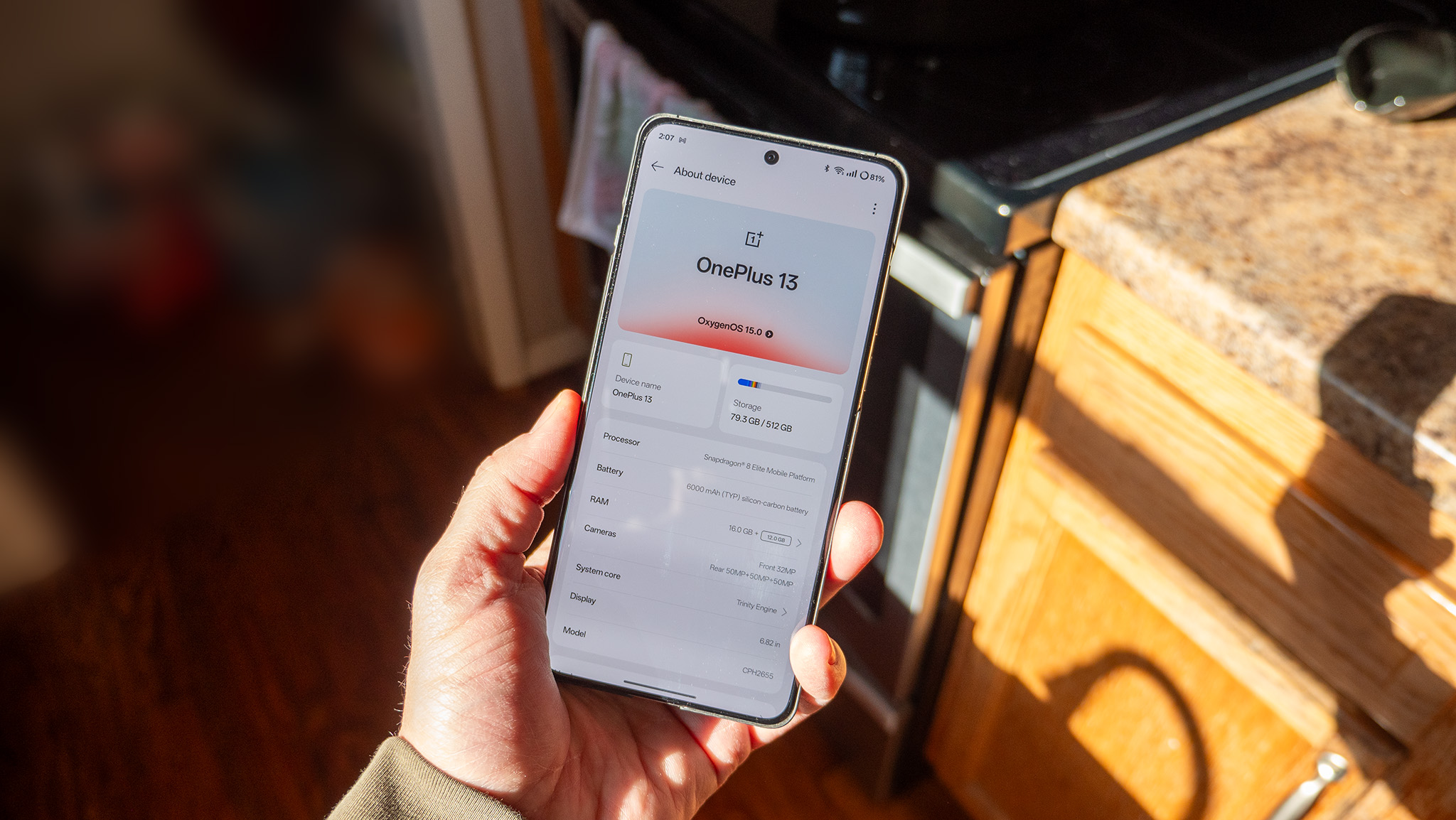
No other flagship phone to date offers a spec sheet quite like the OnePlus 13, which tops out with the best specs in almost every single category.
| Category | OnePlus 13 |
|---|---|
| OS | Oxygen OS 15 (Android 15 based) |
| Display | 6.82-inch OLED, QHD+ (3168 x 1440), 1-120Hz LTPO 4.1, 4,500 nits (peak), Ceramic Guard glass |
| Display eye-friendly features | DC-like dimming, 2160Hz PWM dimming, 10-bit color depth without dithering |
| Processor | Snapdragon 8 Elite |
| Memory | 12GB, 16GB LPDDR5X RAM |
| Storage | 256GB, 512GB UFS 4.0 |
| Camera 1 (Main) | 50MP (OIS), Sony LYT-808 1/1.4" sensor, f/1.6, 1.12 μm, 85-degree FoV |
| Camera 2 (Ultrawide) | 50MP, Samsung S5KJN5 1/2.75" sensor, f/2.05, 0.64 μm, 120-degree FoV |
| Camera 3 (Telephoto) | 50MP (OIS), Sony LYT-600 1/1.95" sensor, f/2.4, 0.8 μm, 3x optical zoom (120x digital zoom max) |
| Selfie Camera | 32MP (Fixed focus), Sony IMX615 1/2.74" sensor, f/2.2, 0.8 μm, 90-degree FoV |
| Battery | 6,000mAh (dual 3,000mAh) Silicon NanoStack |
| Charging | 80W/100W wired, 50W wireless |
| Protection | IP68, IP69, Ceramic Guard glass, optional vegan leather back |
| Security | Ultrasonic in-glass fingerprint sensor |
| Connectivity | 5G, Wi-Fi 7, Bluetooth 5.4 |
| Dimensions | 162.9 high x 76.5 wide, 8.5mm thin (Arctic/Black), 8.9mm thin (Midnight Ocean) |
| Weight | 213g (Arctic/Black), 210g (Midnight Ocean) |
| Colors | Arctic Dawn, Midnight Ocean, Black Eclipse |
OnePlus 13: Design and Hardware
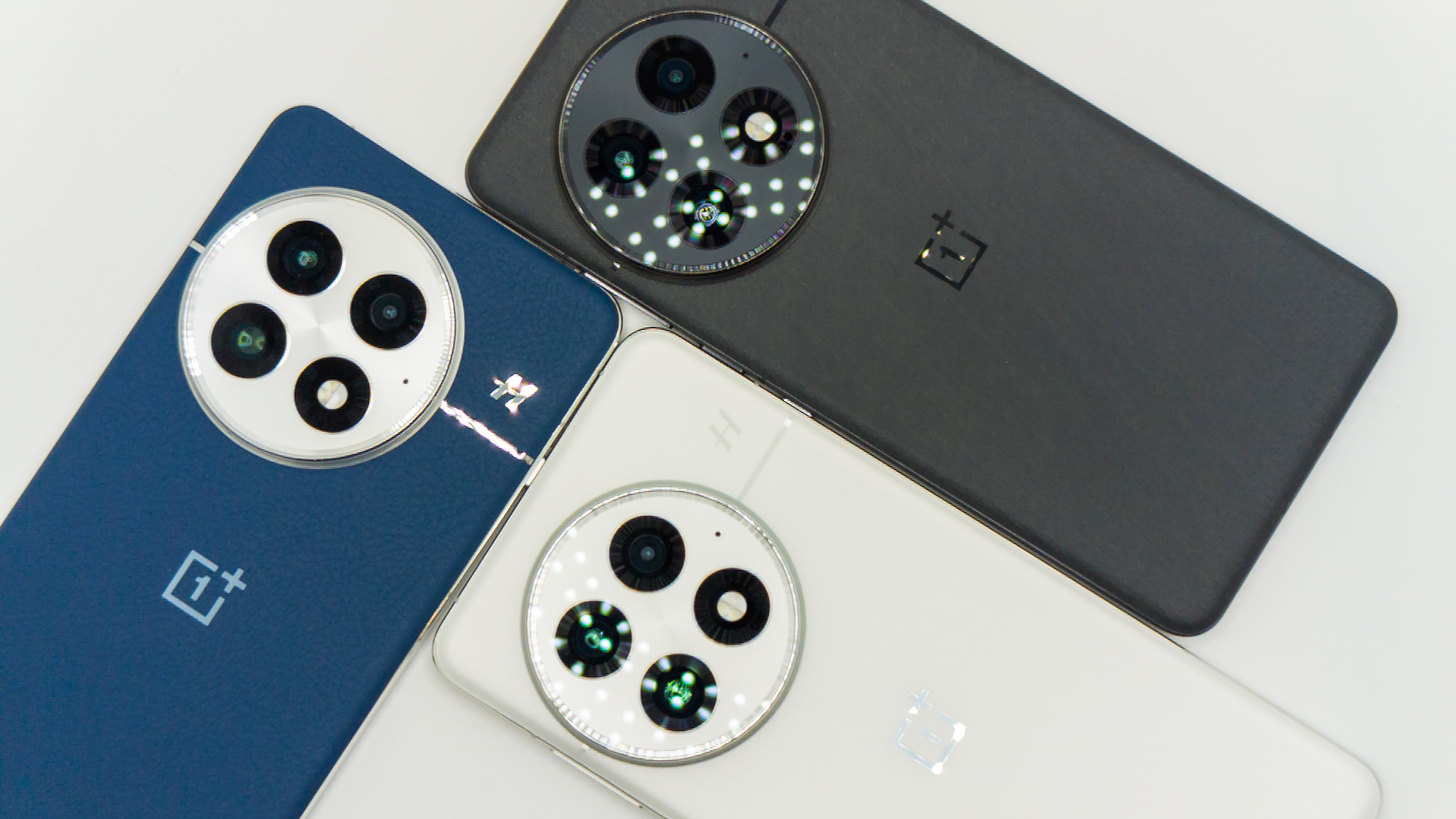
The OnePlus 13 is the perfect mix between classic OnePlus phone design and modern phone design trends. It keeps the trademark alert slider on the side, making it easy to switch between silent, vibrant, and normal volume modes. It features the best haptics I've used on any non-Pixel phone, and the new haptic moments in Oxygen OS 15 highlight the haptic quality over every other phone on the market.
Most Android manufacturers have started making flatter phones, and while the OnePlus 13 is the flattest flagship OnePlus has made in quite some time, it's not as flat as a Galaxy S24 or Pixel 9. Instead, OnePlus struck a much nicer balance between its previous design and those totally flat phones, creating something that feels significantly better to hold.
The side rails are flat, but both the front and back of the phone have a slight "2.5D" curved edge. This makes it easy to slide your finger underneath when it's sitting on a table and makes it far more comfortable to hold and use than Google or Samsung's overly flat designs. Not everyone will agree, but I don't like flat phones and strongly dislike the trend of making everything a flat slab.
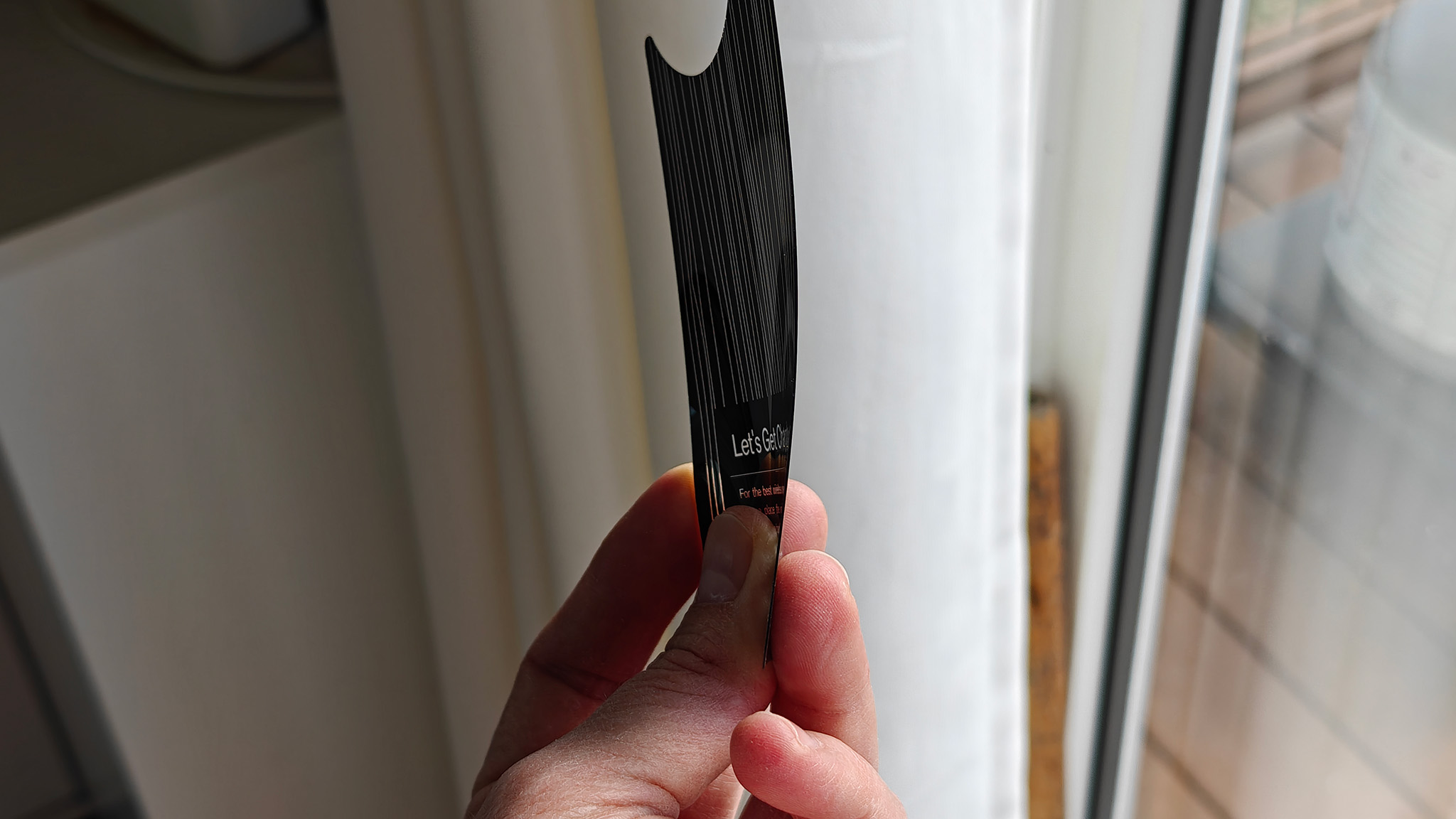
Despite having a battery that's 600mAh larger than the OnePlus 12, the OnePlus 13 ends up being a bit thinner — 9.2mm for the OnePlus 12 versus 8.5mm thin for the Arctic and Black colorways, or 8.9mm thin for the blue Midnight Ocean variant.
The textured glass on the Arctic and Black colorways is quite nice looking, but nothing can beat the vegan leather blue model that I've got for review. Every company's "vegan leather" feels a little different, and the one OnePlus uses here feels like suede, which is particularly fitting since it's blue.
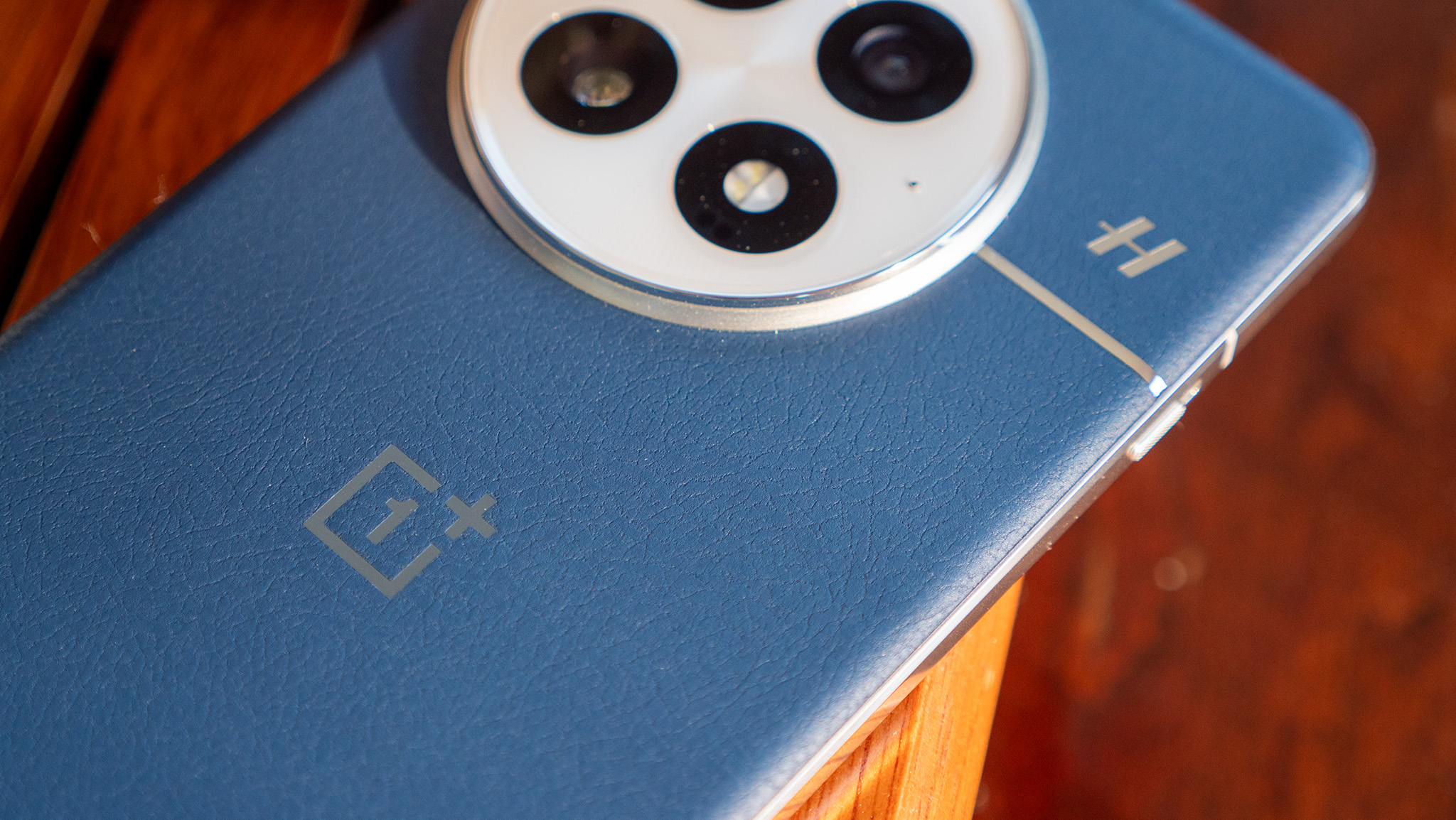
The blue vegan leather feels like suede and offers a superior level of protection that no other flagship phone on the market offers through IP69 certification.
Visually, the blue OnePlus 13 is the most beautiful phone I've ever used. The silver trim and white camera island look and feel incredibly classy, and the vegan leather both add a layer of grip that glass can't offer. Plus, according to OnePlus, the phone is even more durable since there's no glass at all on the back.
No matter what colorway you choose, every OnePlus 13 is IP68 and IP69 water and dust-resistant. As Harish Jonnalagadda explained in his exclusive interview with OnePlus's head of design, both certifications are necessary because they signify different things. IP68 covers water submersion, while IP69 includes the ability to withstand high-pressure jets of water at up to 80 degrees Celsius.
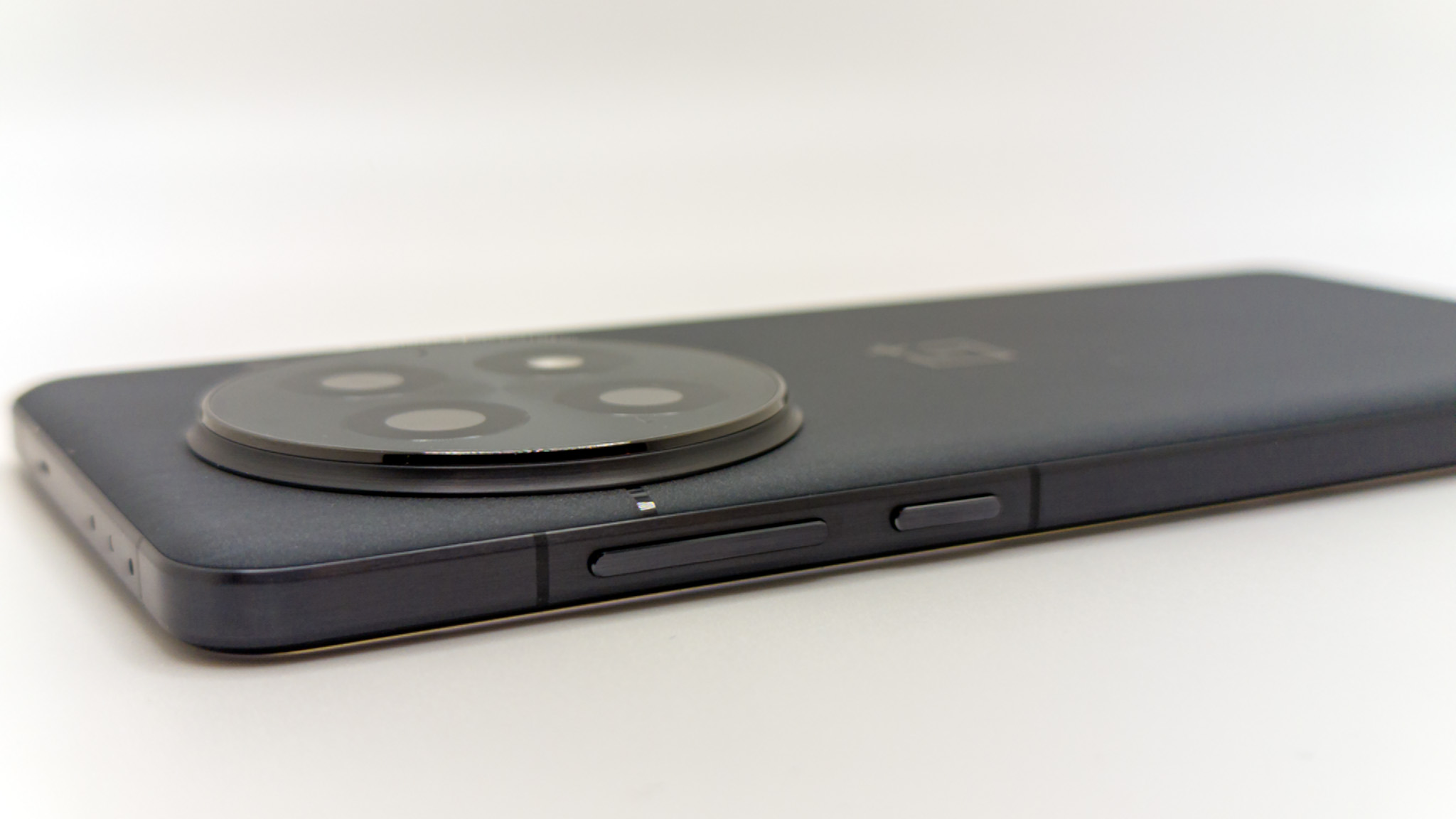
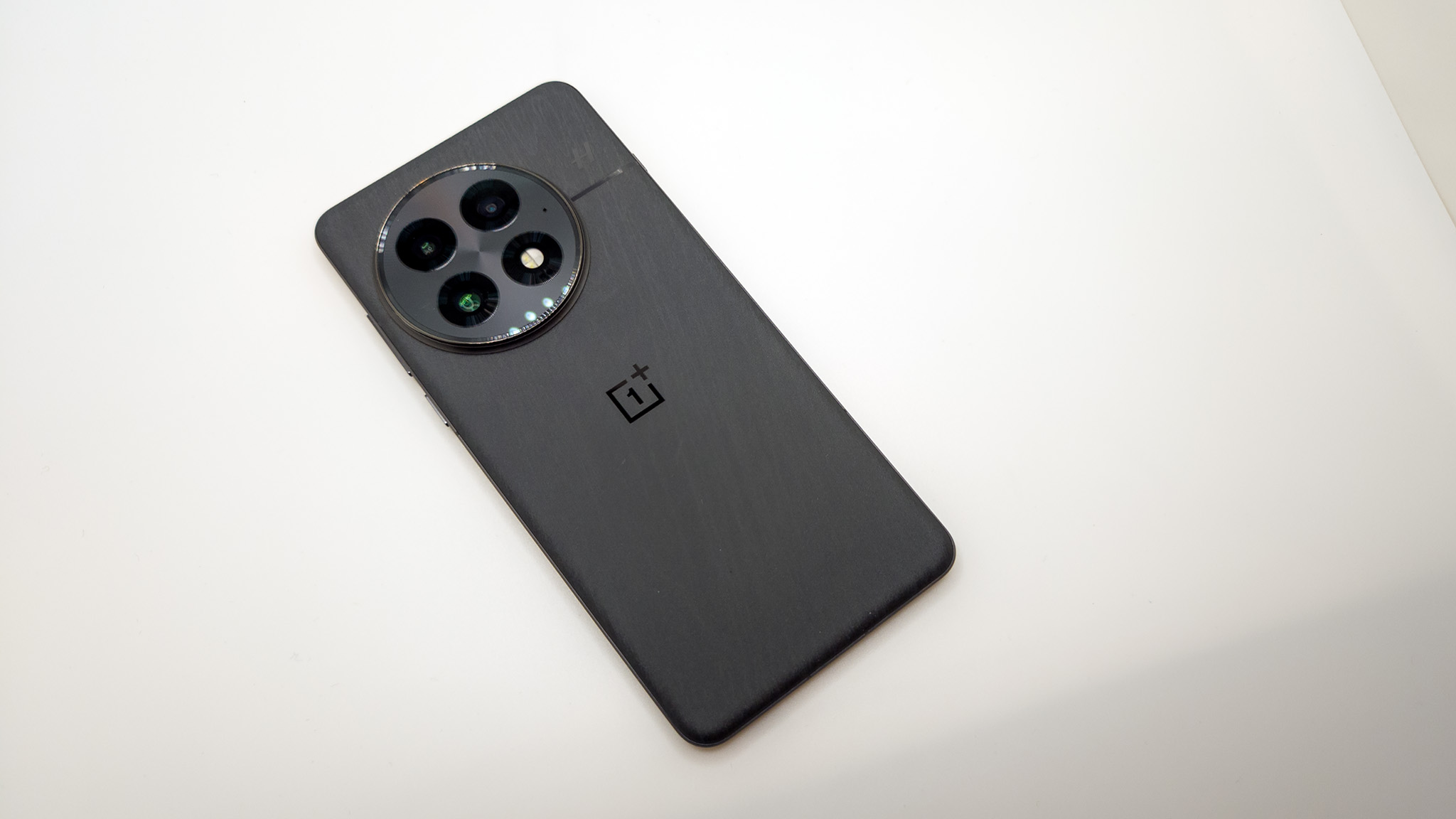
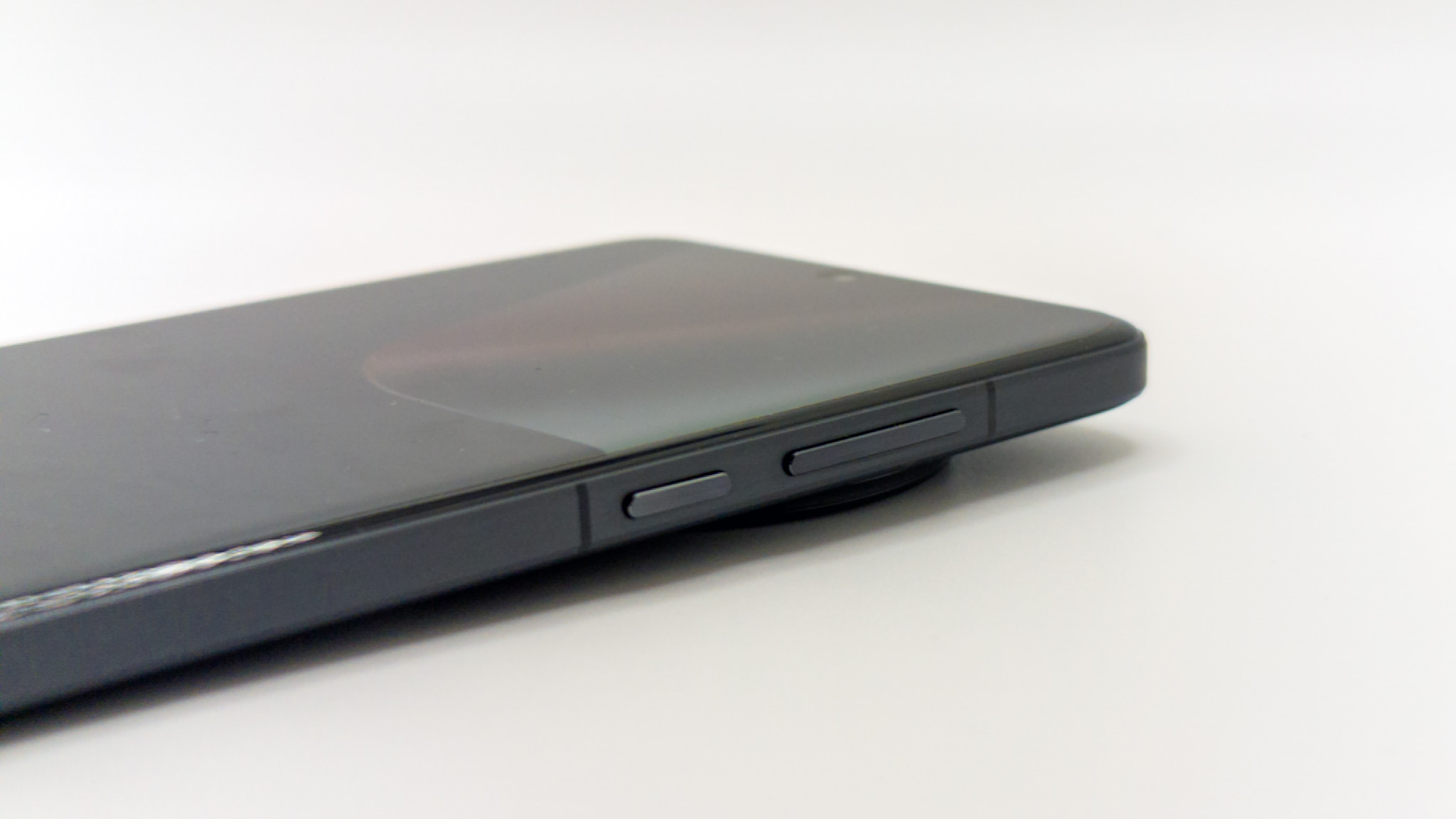
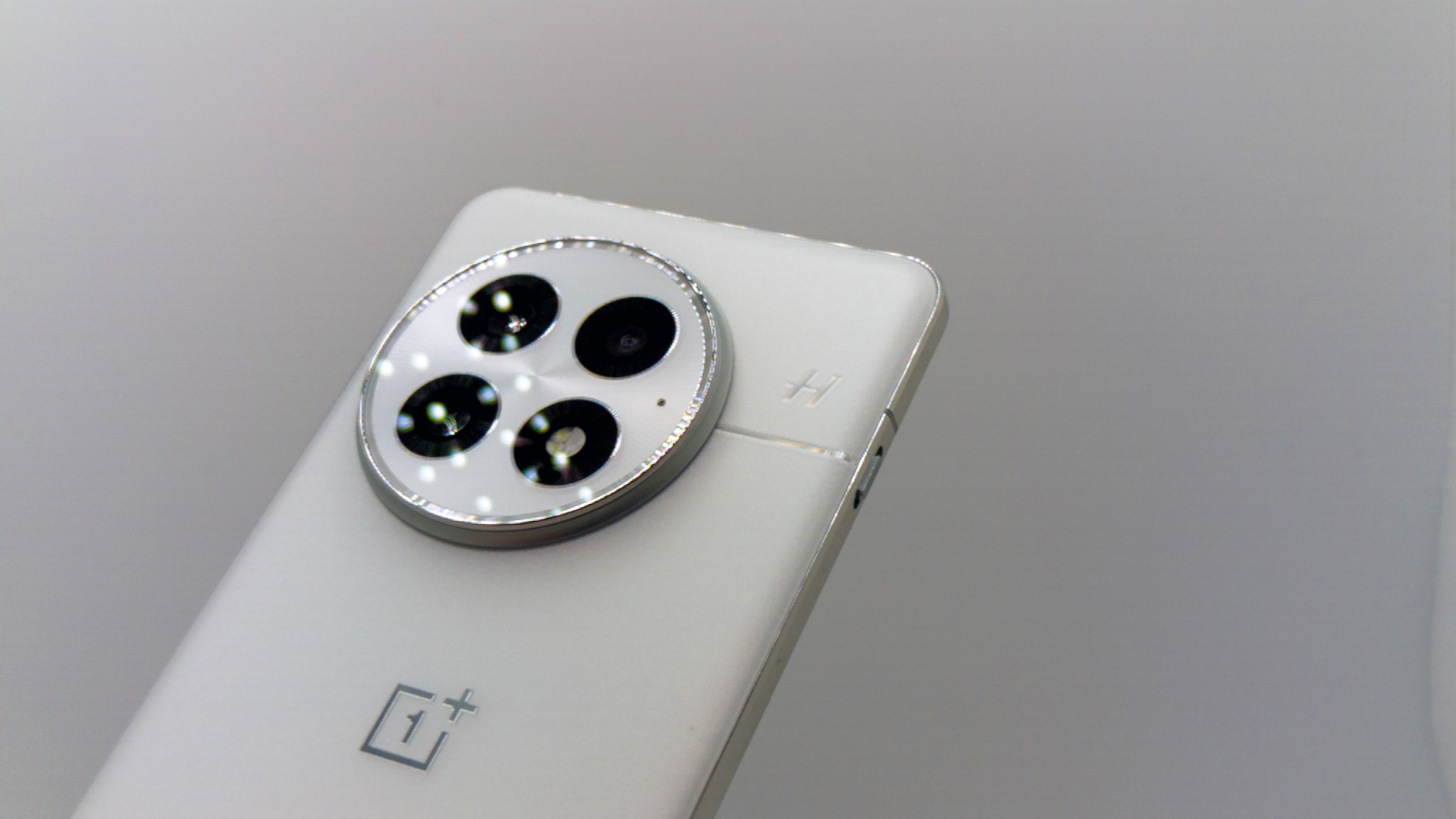
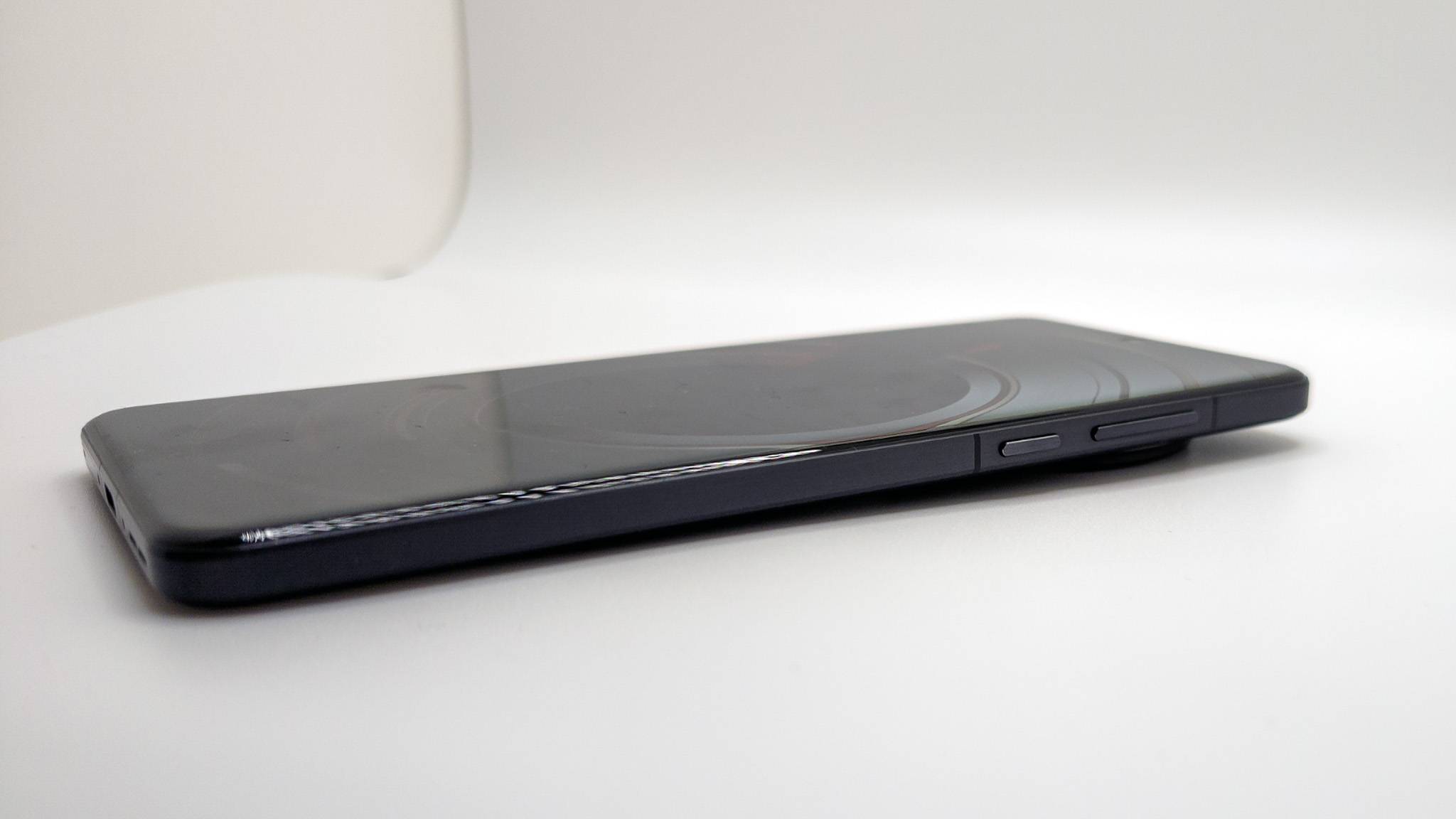
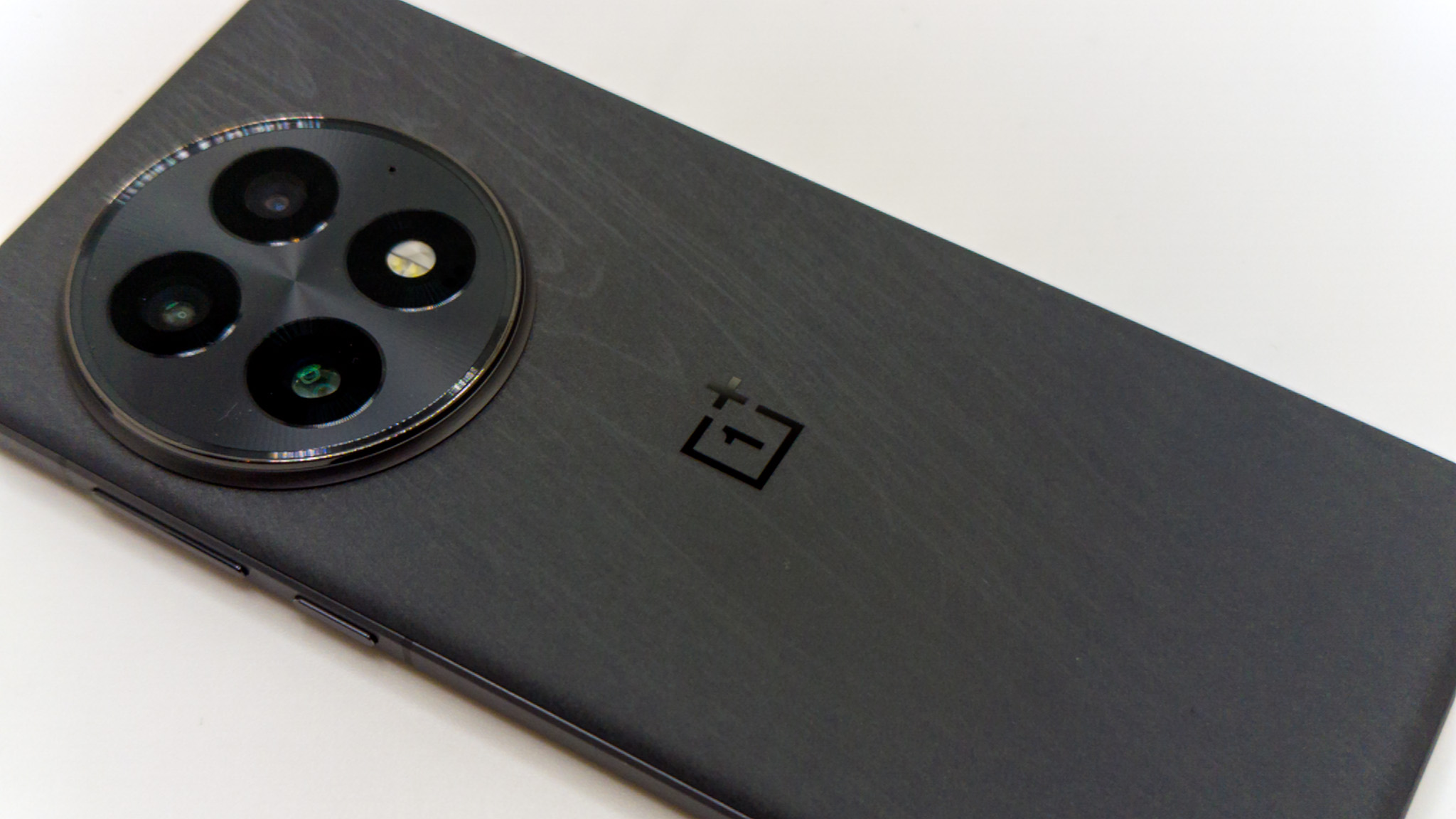
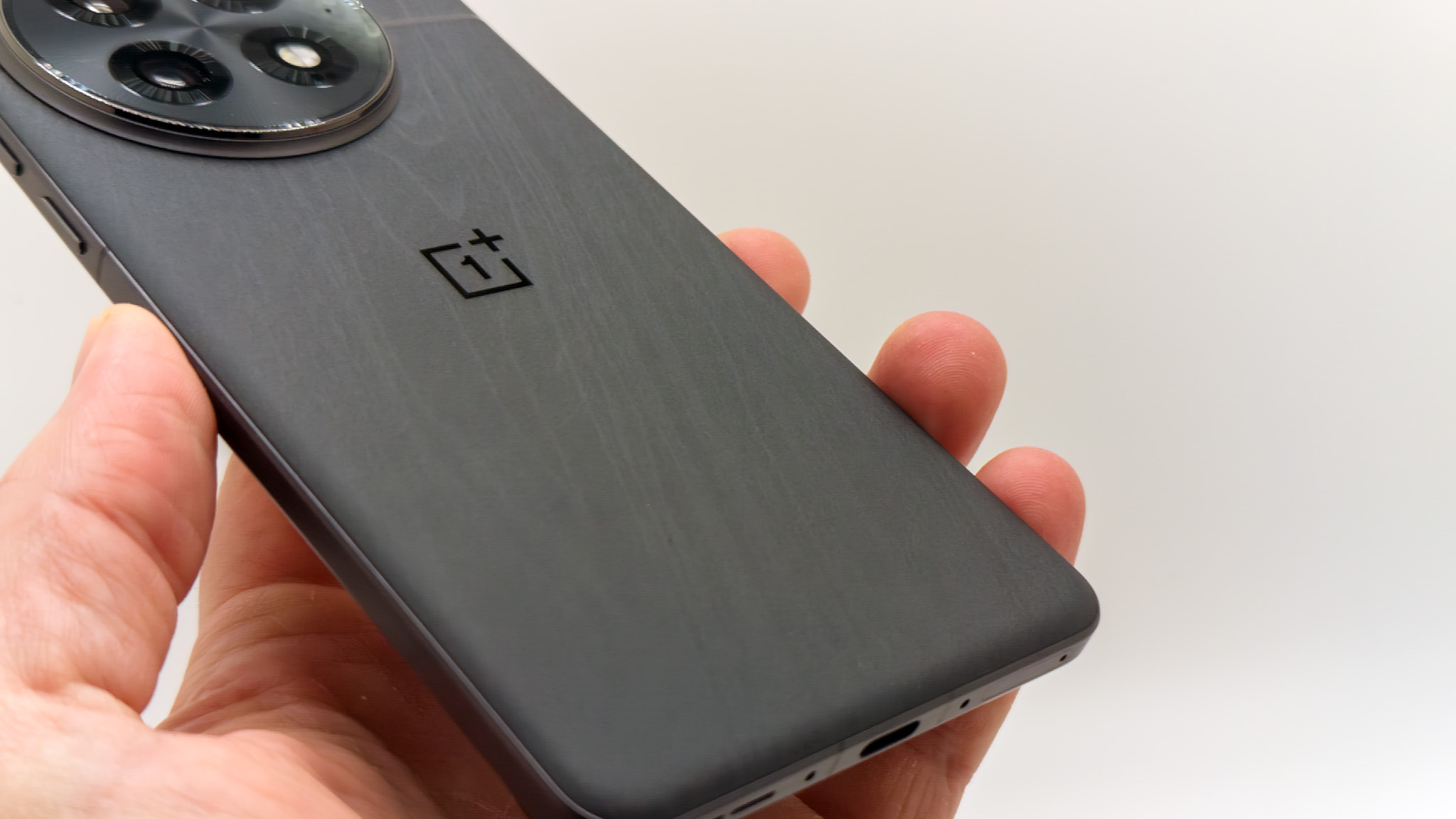
The phone's haptics are next-level good, eclipsing most phones on the market in quality and usage creativity throughout the daily experience.
To test this out, we ran a blue OnePlus 13 through a dishwasher's sanitizing cycle for four hours. I then took the OnePlus 13 to a 68c/155f sauna and played Minecraft on it for half an hour, all while keeping it in one of the company's own cases. The phone never got above 50c, but I'll cover performance in more detail in a separate section below.
This is the best-built Android phone on the market, full stop. OnePlus is so confident of the build quality that the company showed off a OnePlus 13 being dropped in hot cooking oil, only to fish it out and use it right after. Funny enough, like every other phone on the market, it's not rated for salt water.
This also marks the first time a OnePlus flagship has received proper IP68 certification. Prior models could technically withstand the same torture tests as other brands, but OnePlus wouldn't necessarily guarantee performance since it wasn't certified. That changes with the OnePlus 13.
This is the best-built Android phone on the market, full stop. You can even sanitize it in your dishwasher thanks to the IP69 certification.
OnePlus also introduced a few new communications features on the OnePlus 13, including BeaconLink and extended Bluetooth range. BeaconLink lets you call another OnePlus 13 (when permission is granted) using just Bluetooth. It's sort of a "walkie-talkie" mode that was fun to use during the OnePlus 13's unveiling event and can reach as far as 200 meters away. Whether or not you'll actually use this in real life is its own conversation, though.
OnePlus is also debuting an expanded Bluetooth range for earbuds in a Q1 update, so you can keep playing music from across the house (or office) without it cutting in and out.
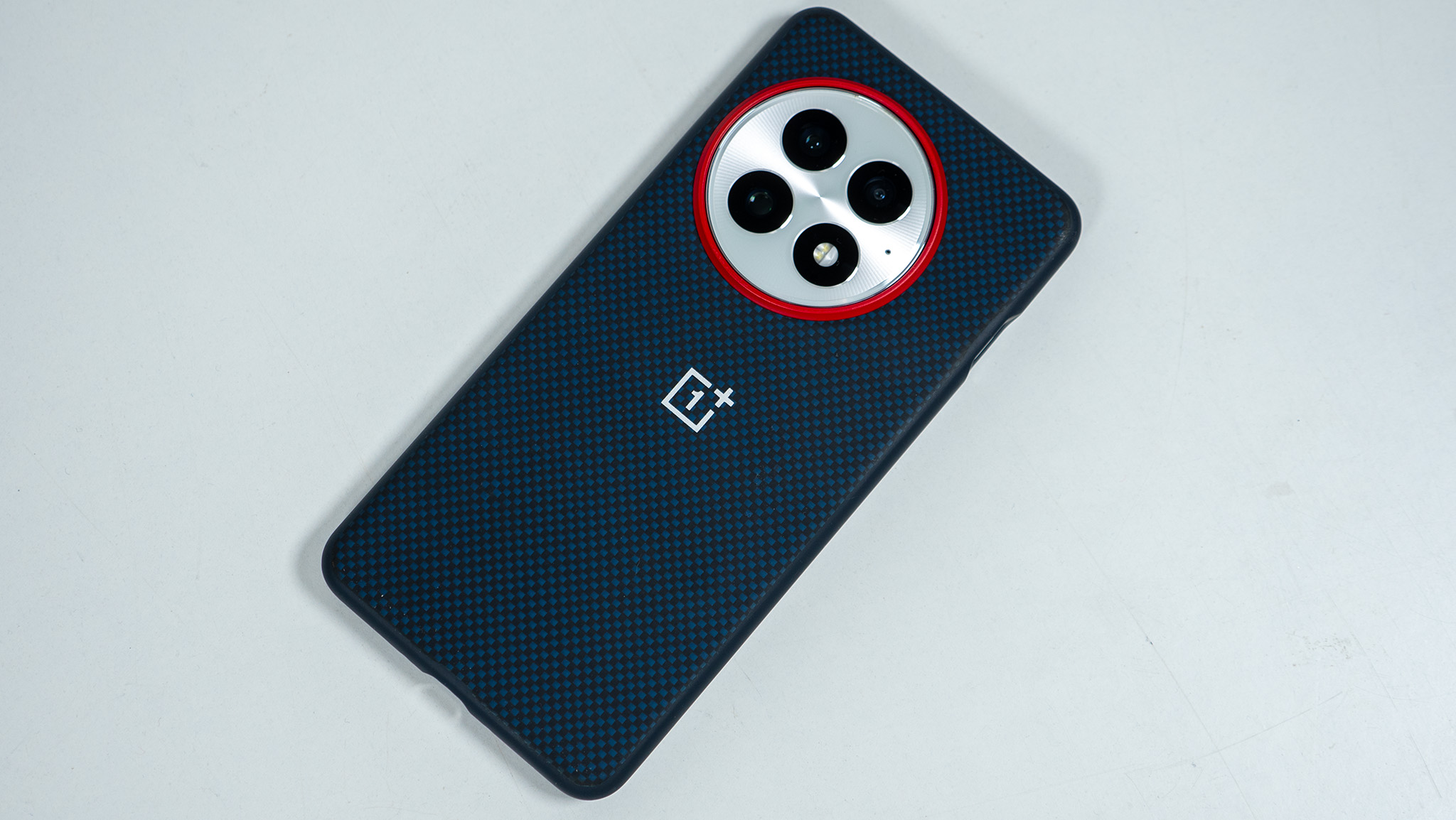
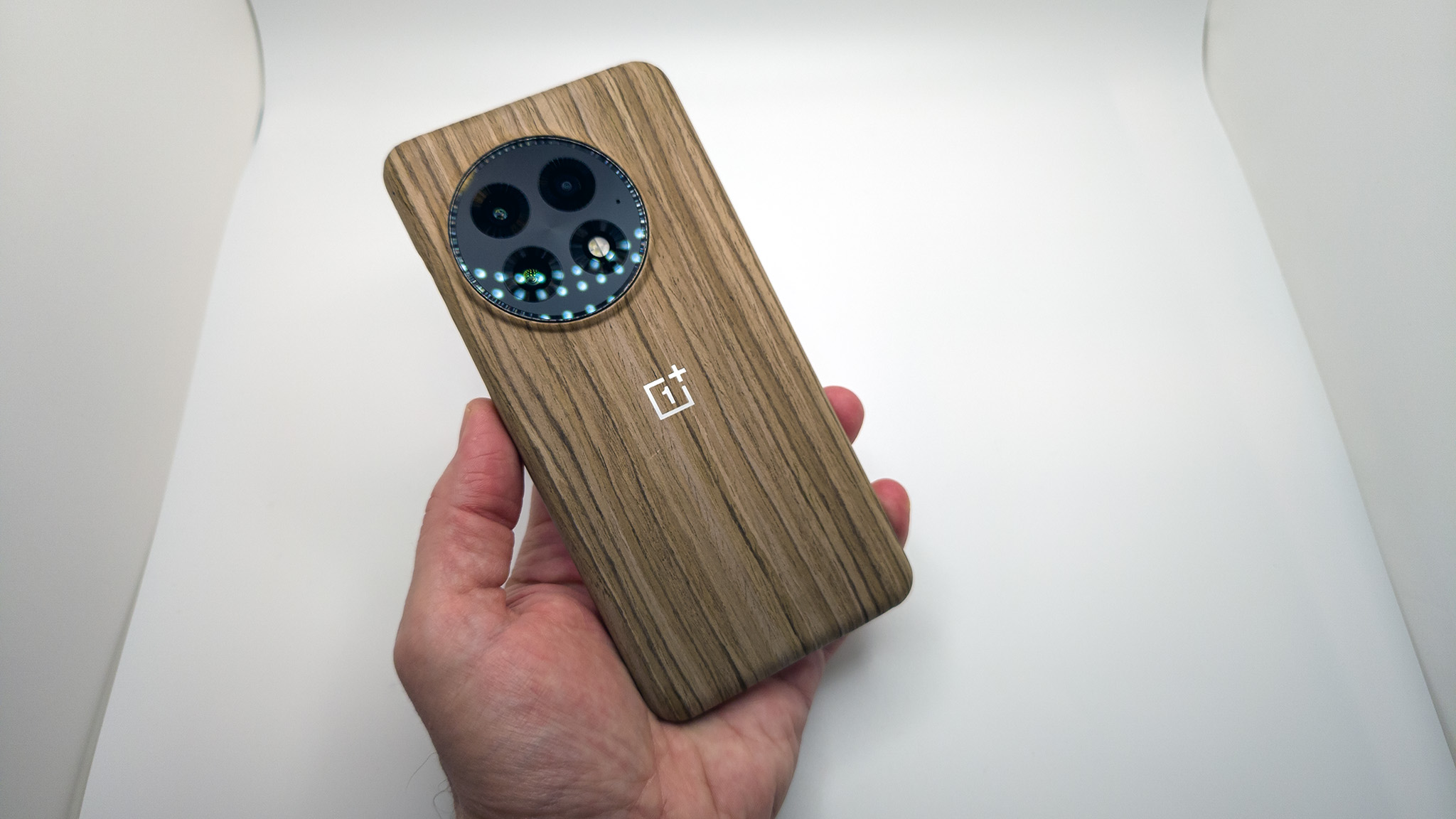
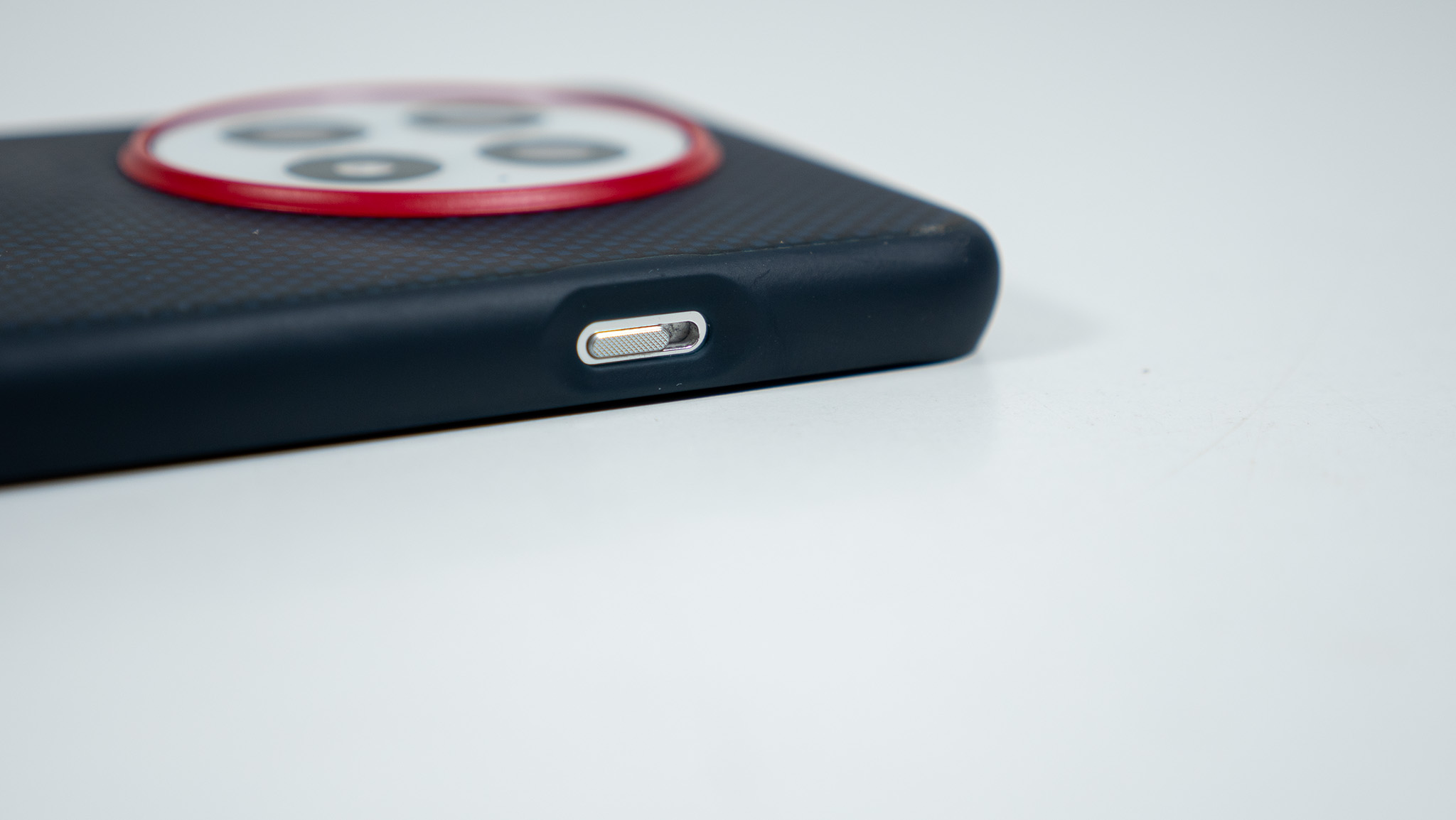
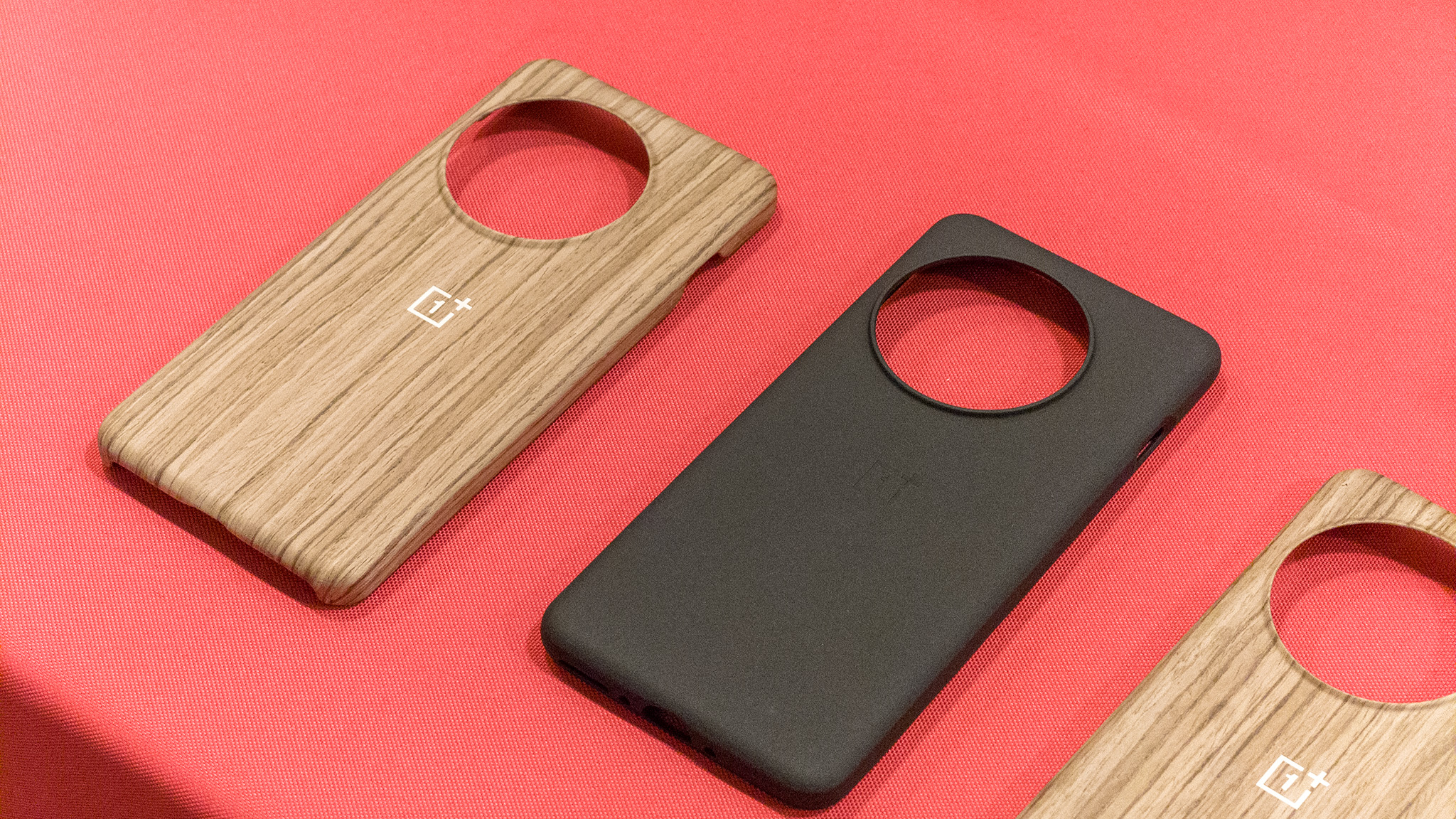
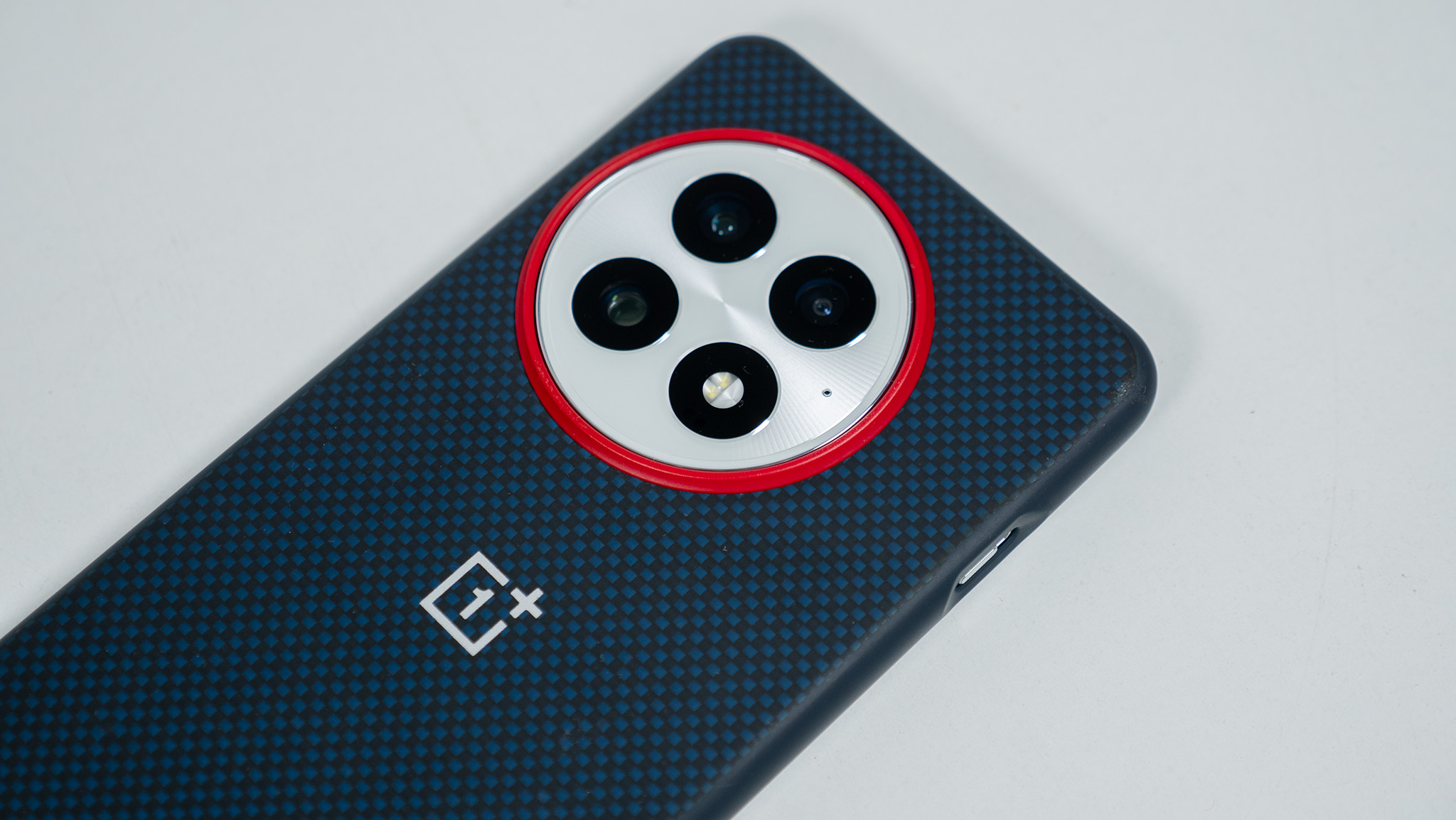
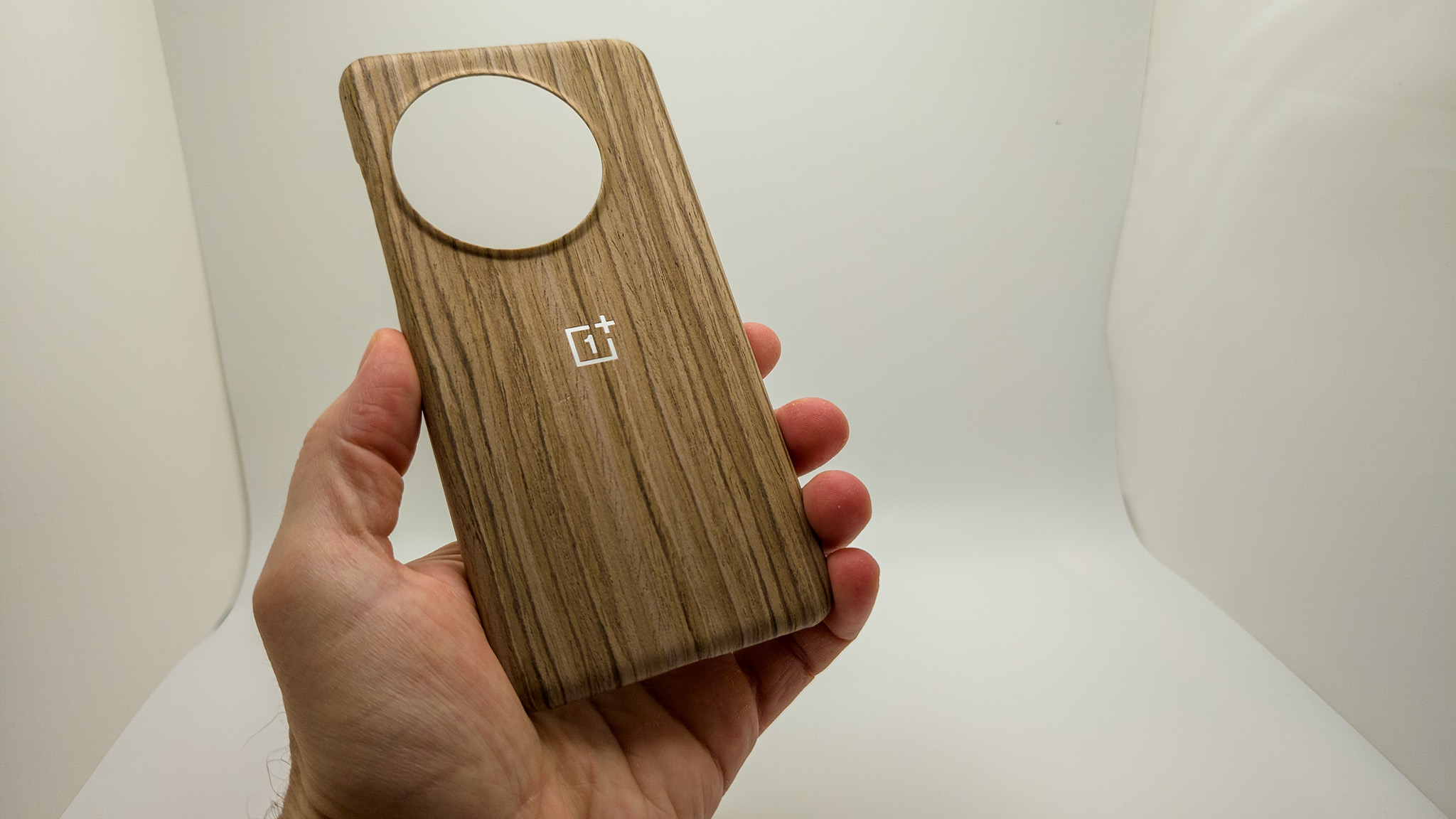
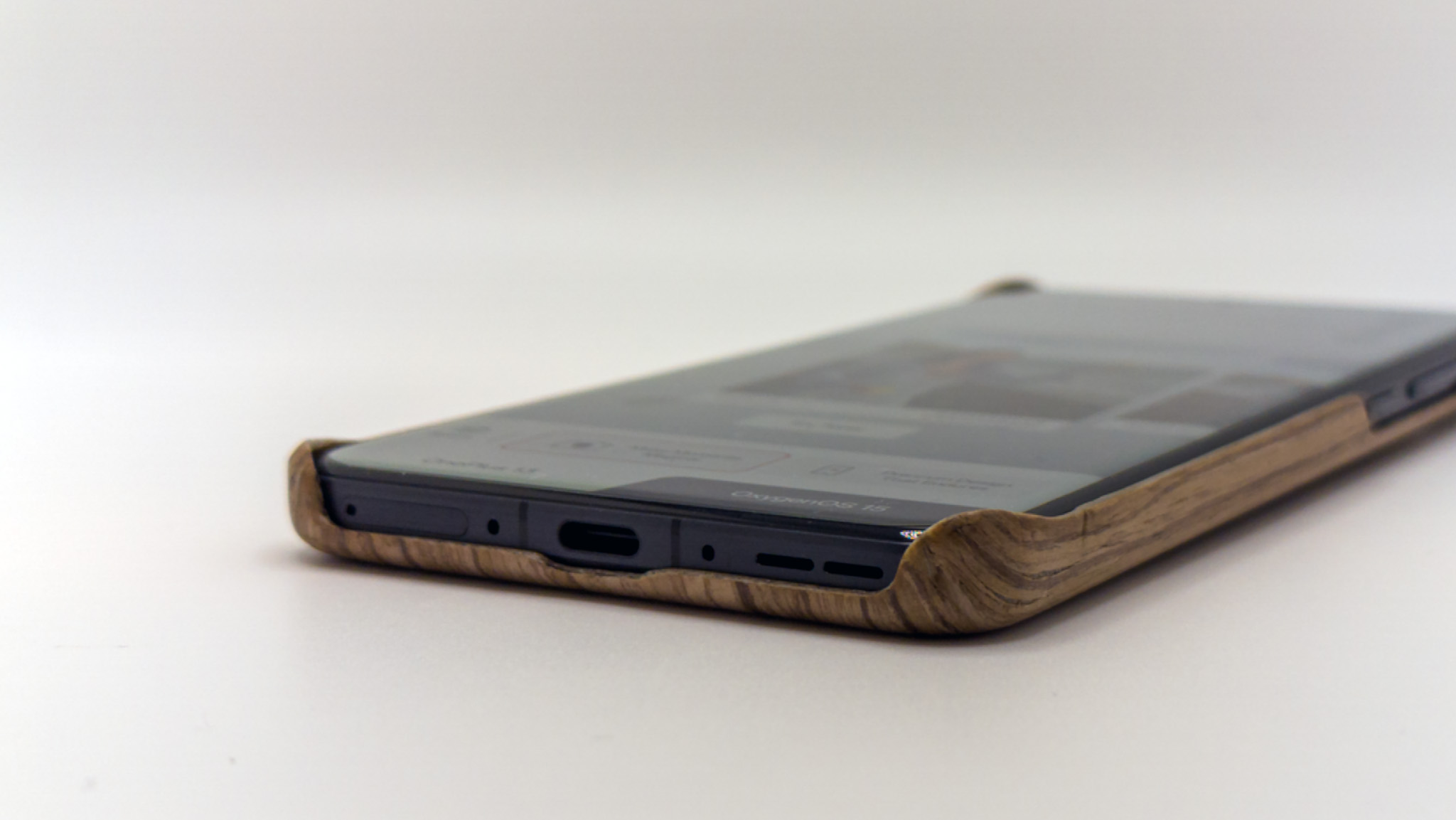
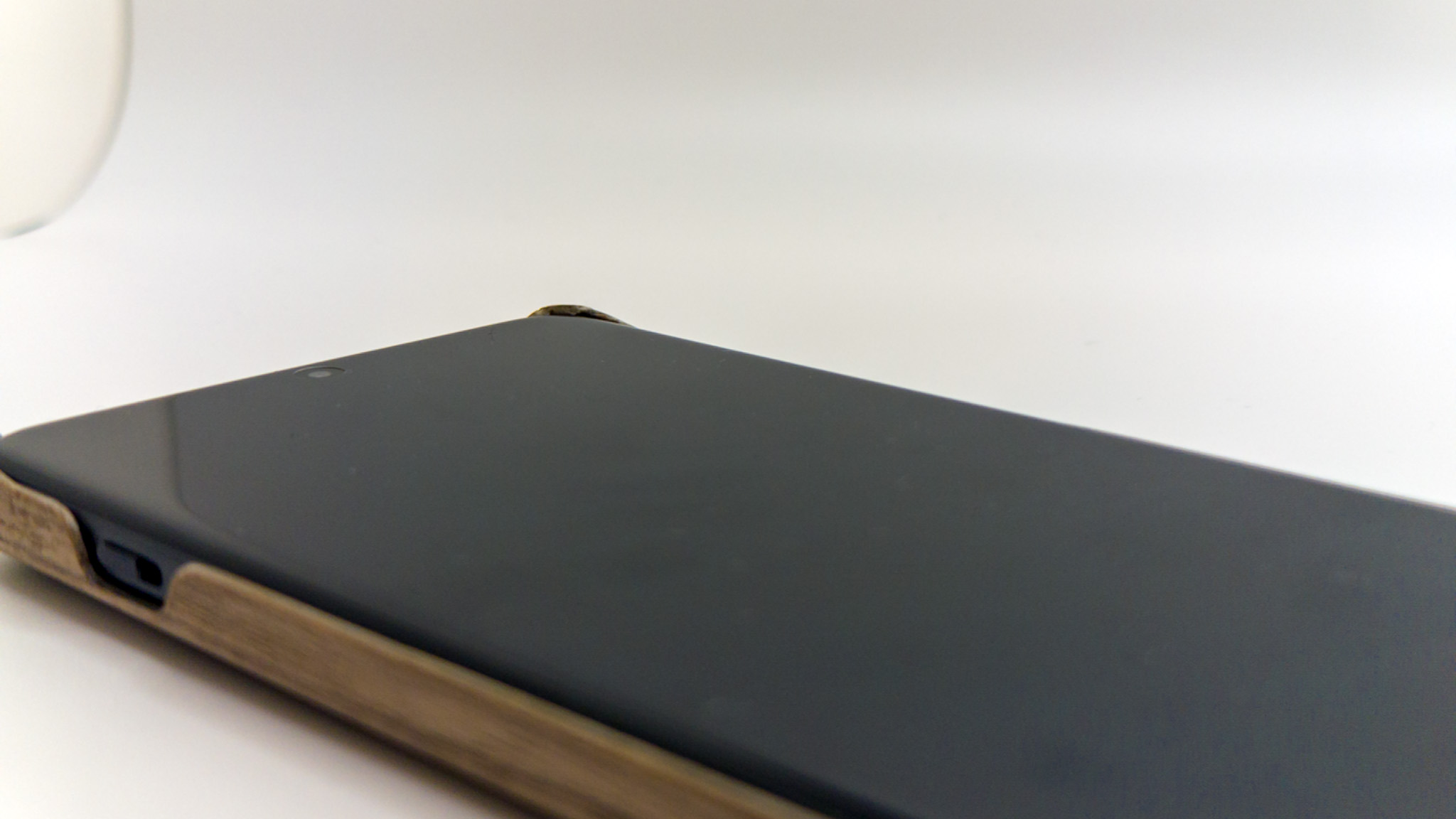

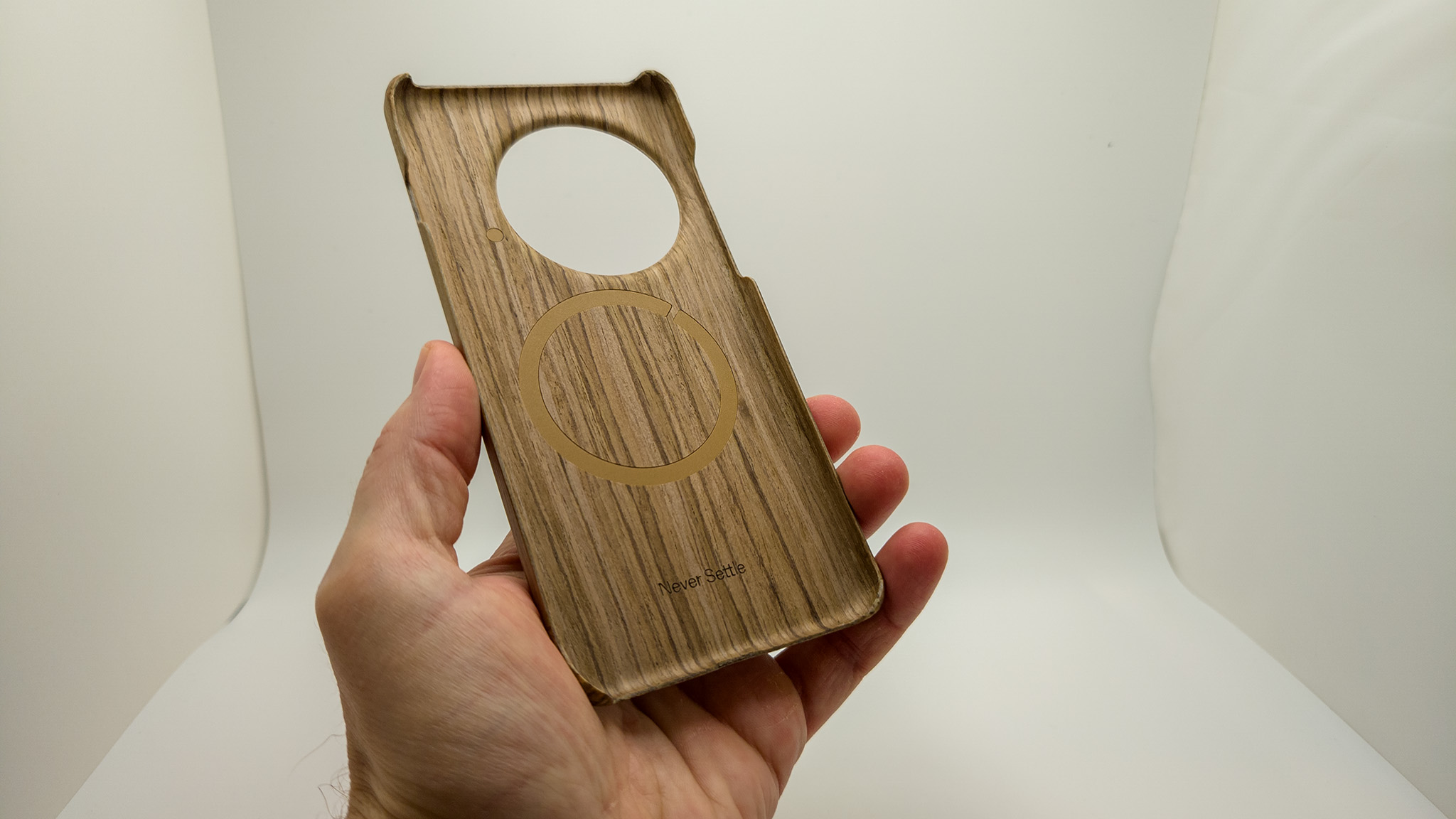
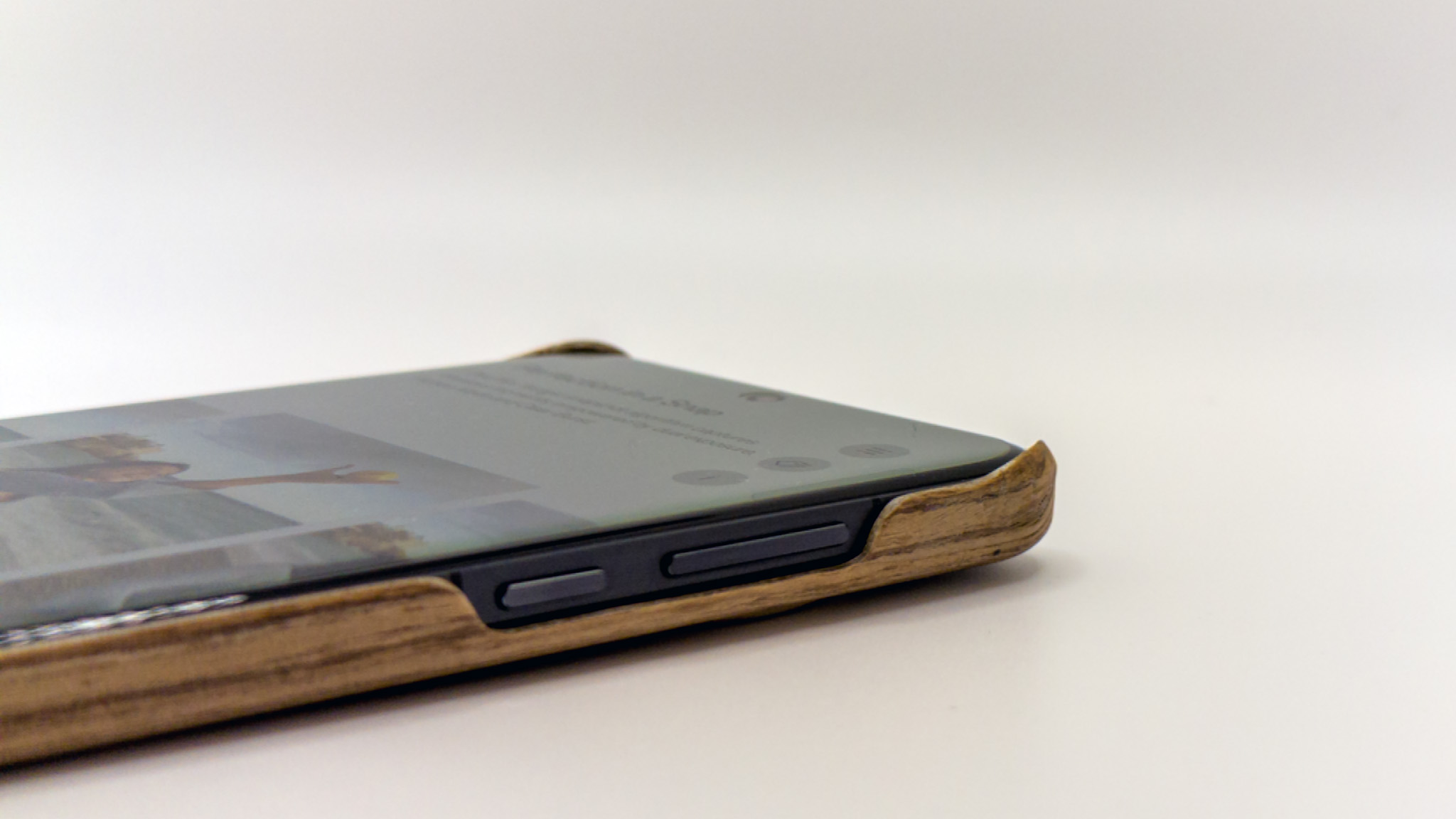
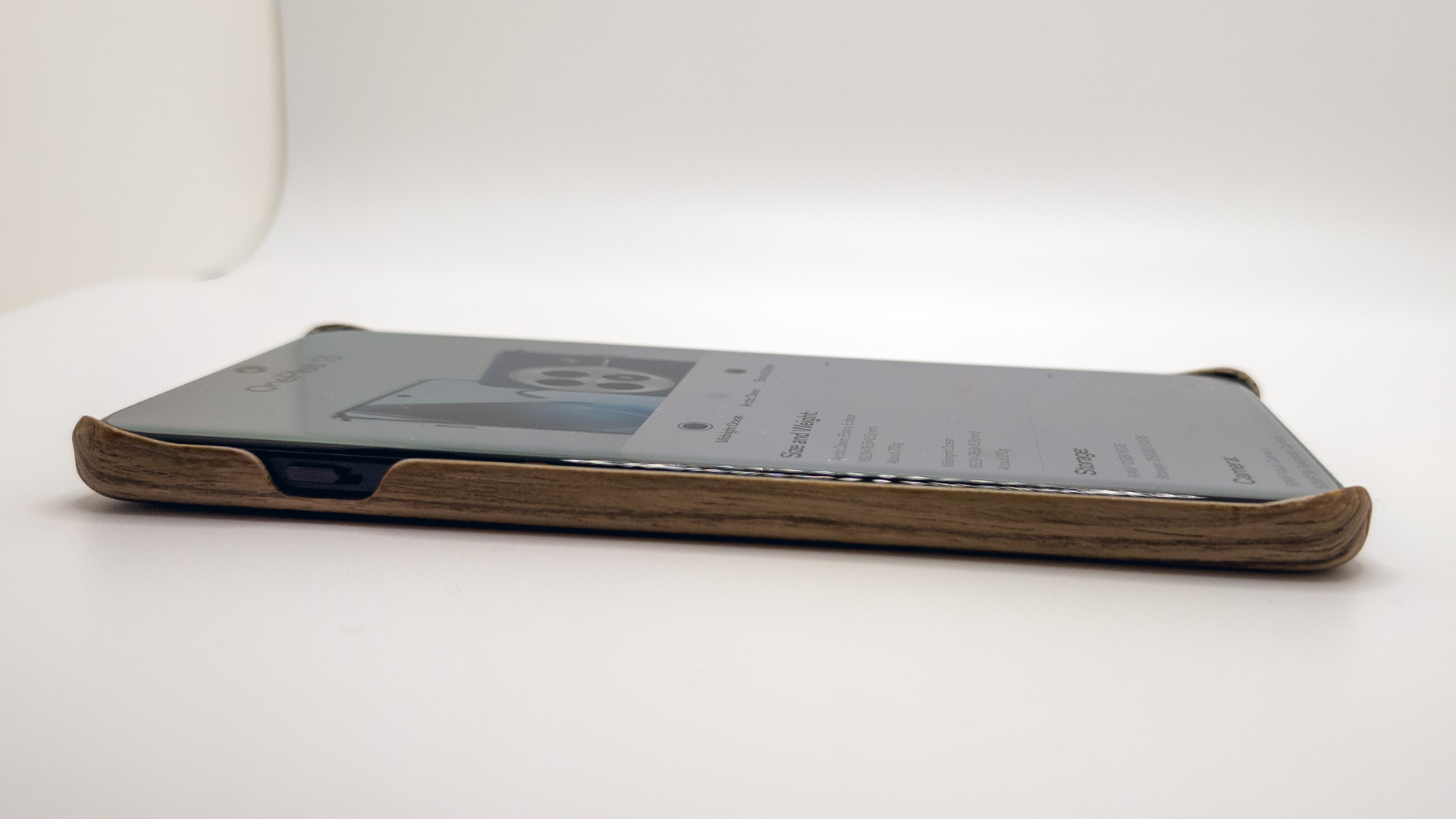
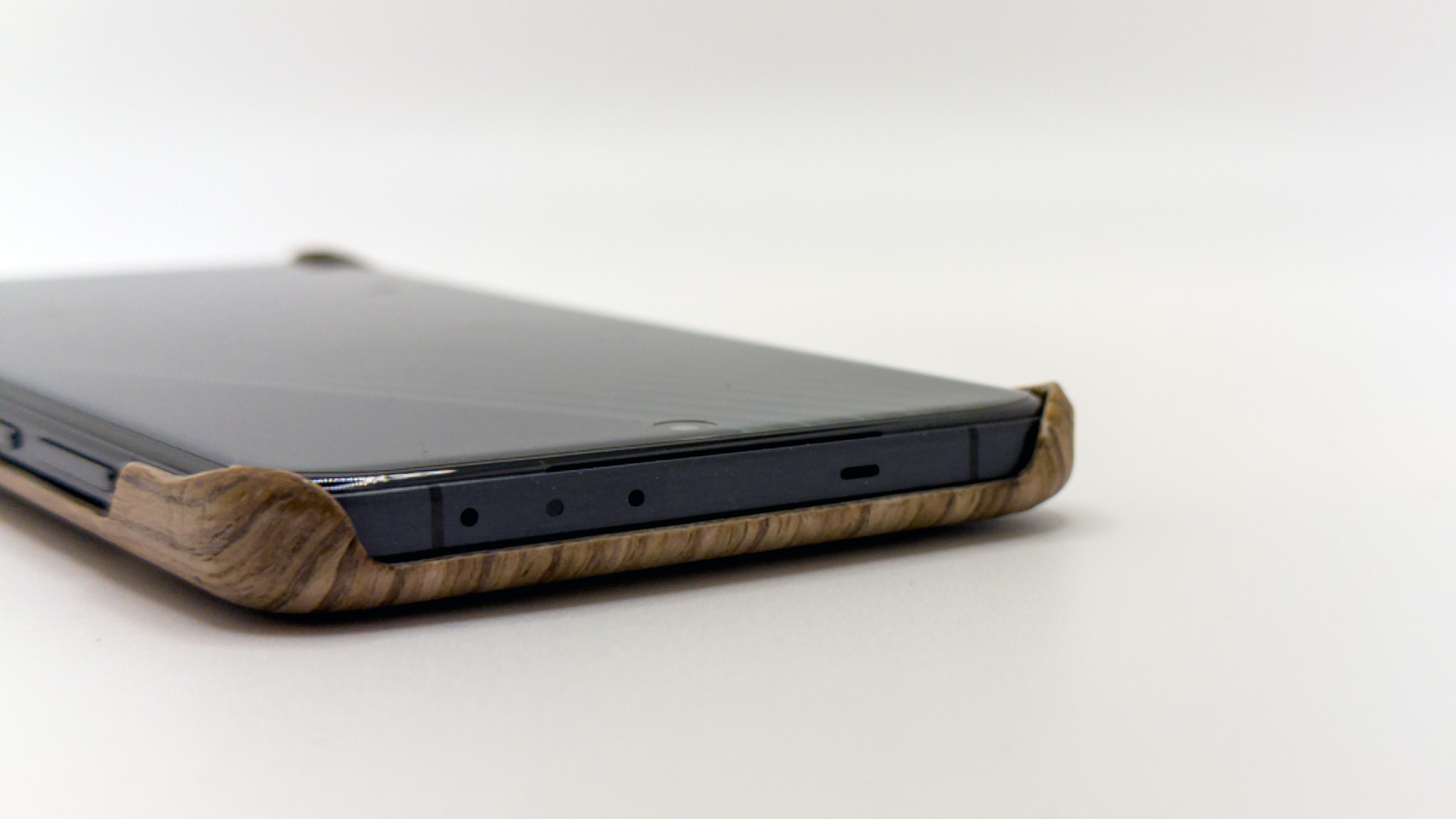
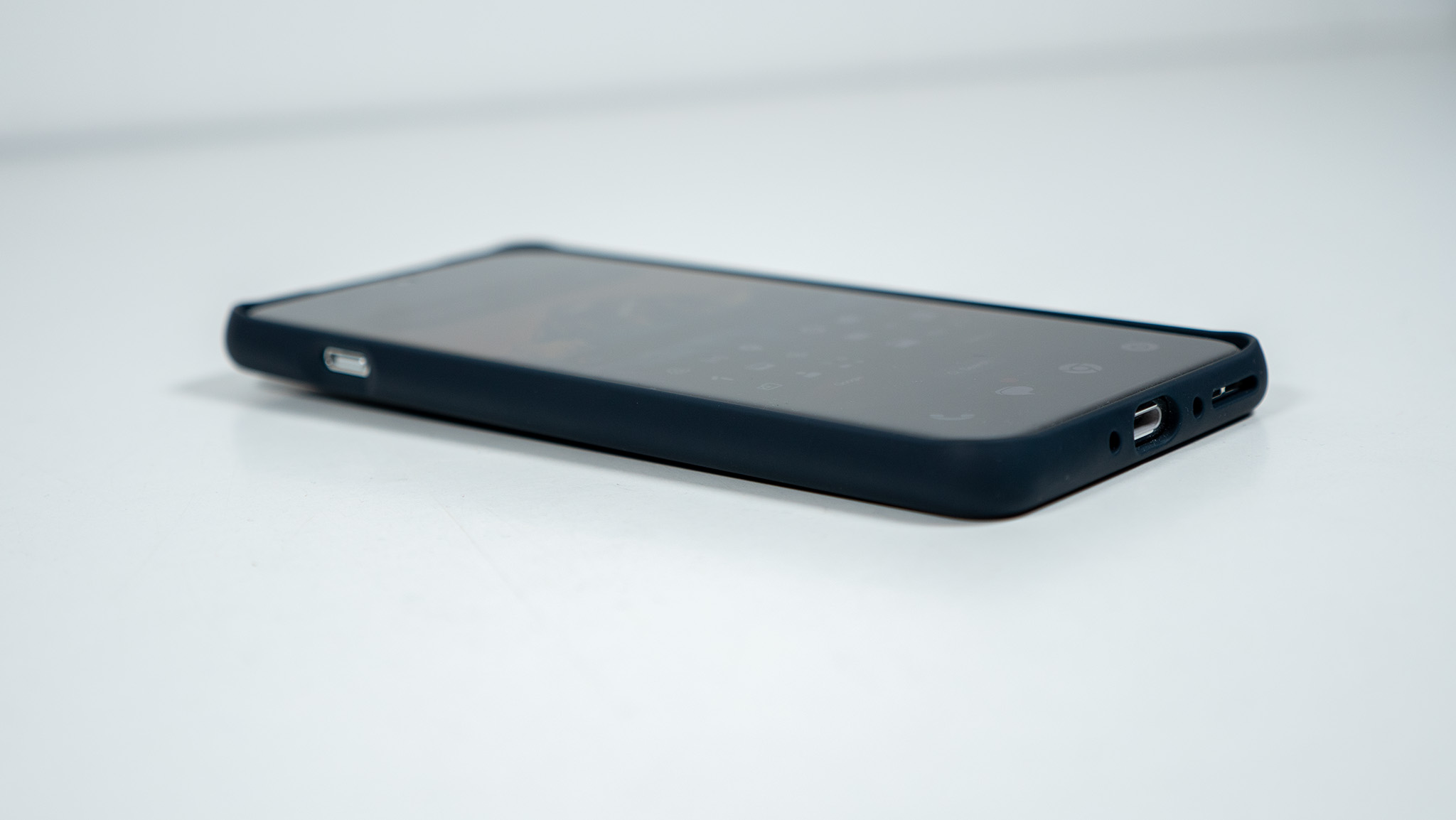
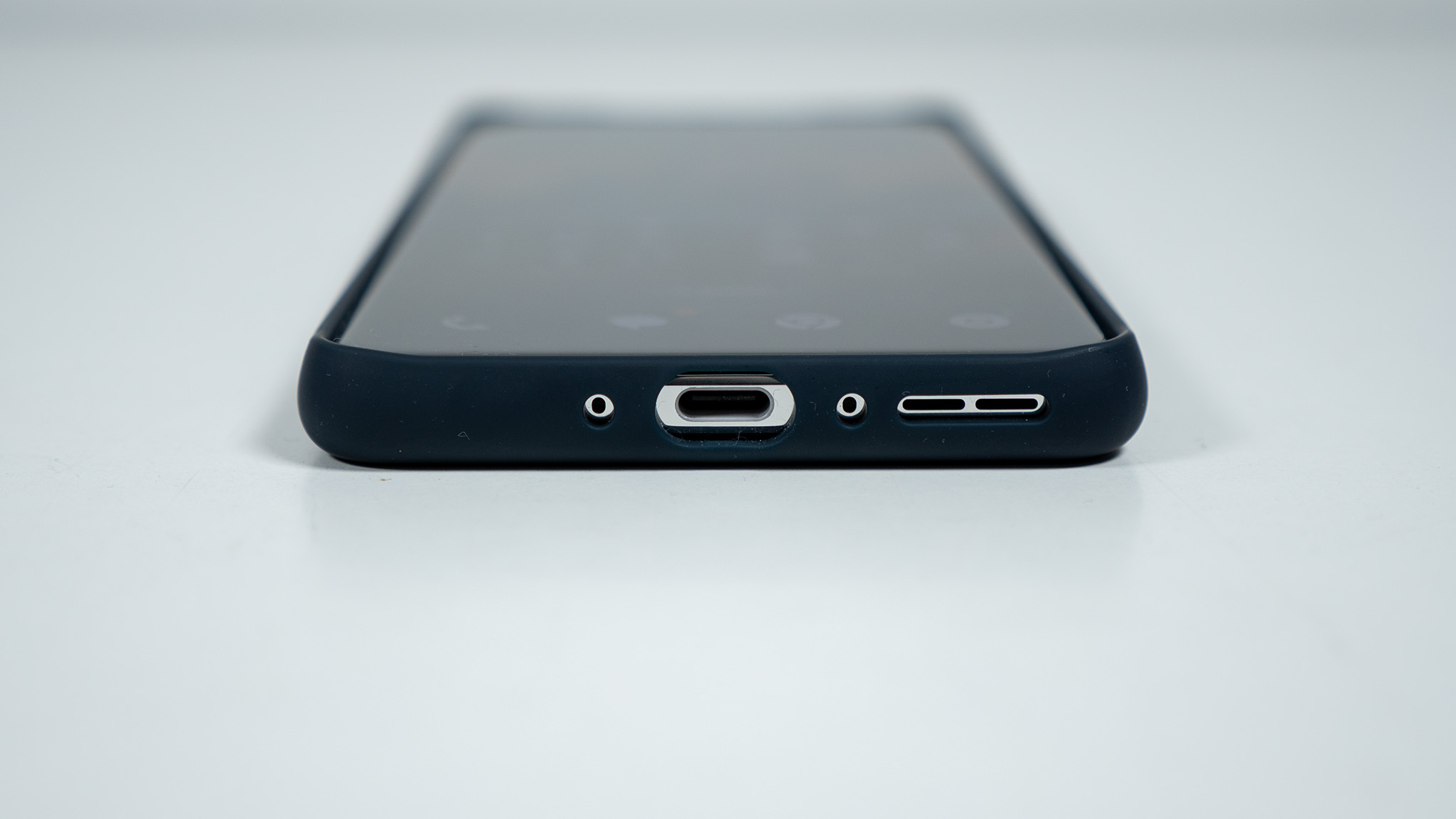
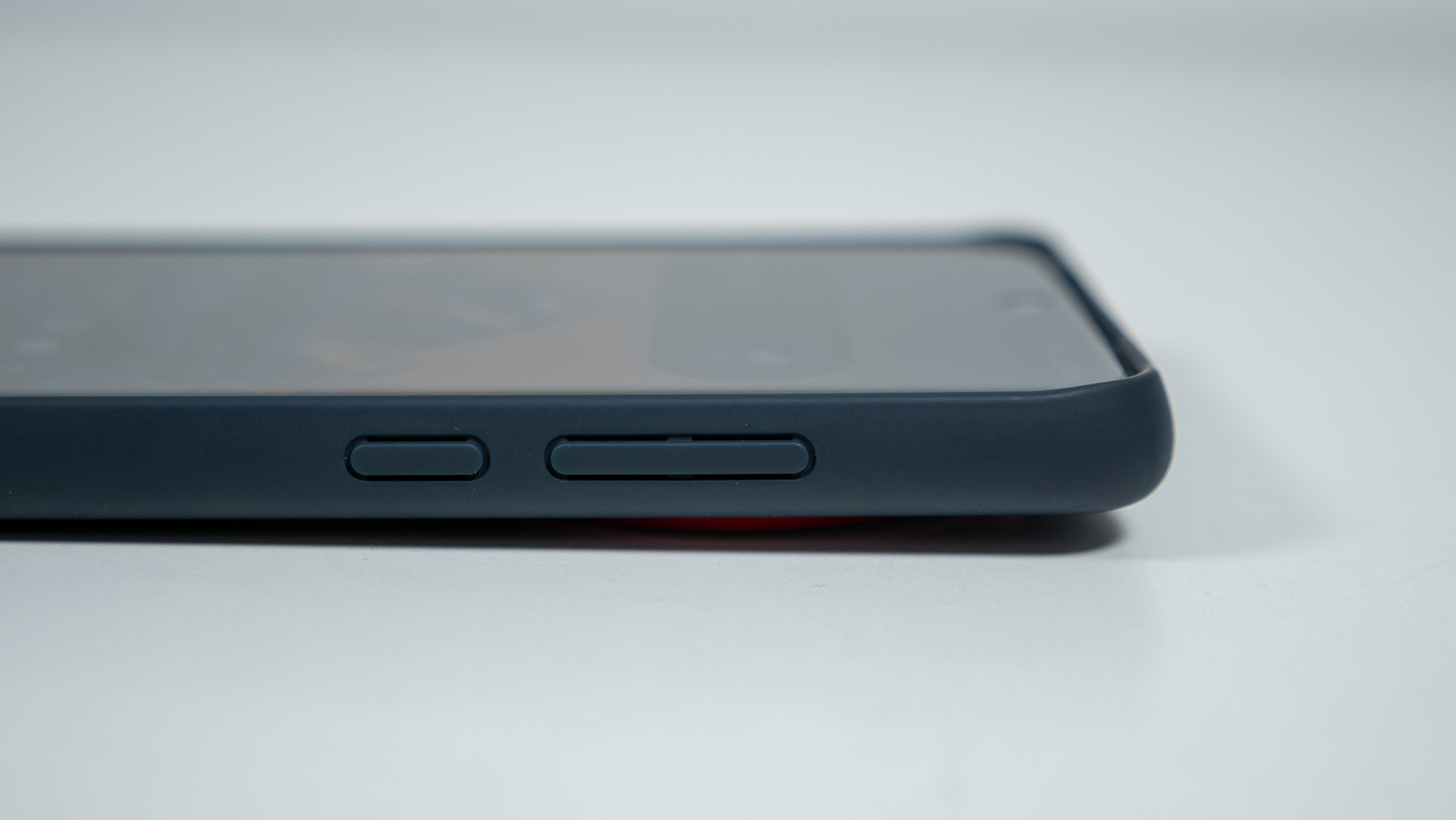

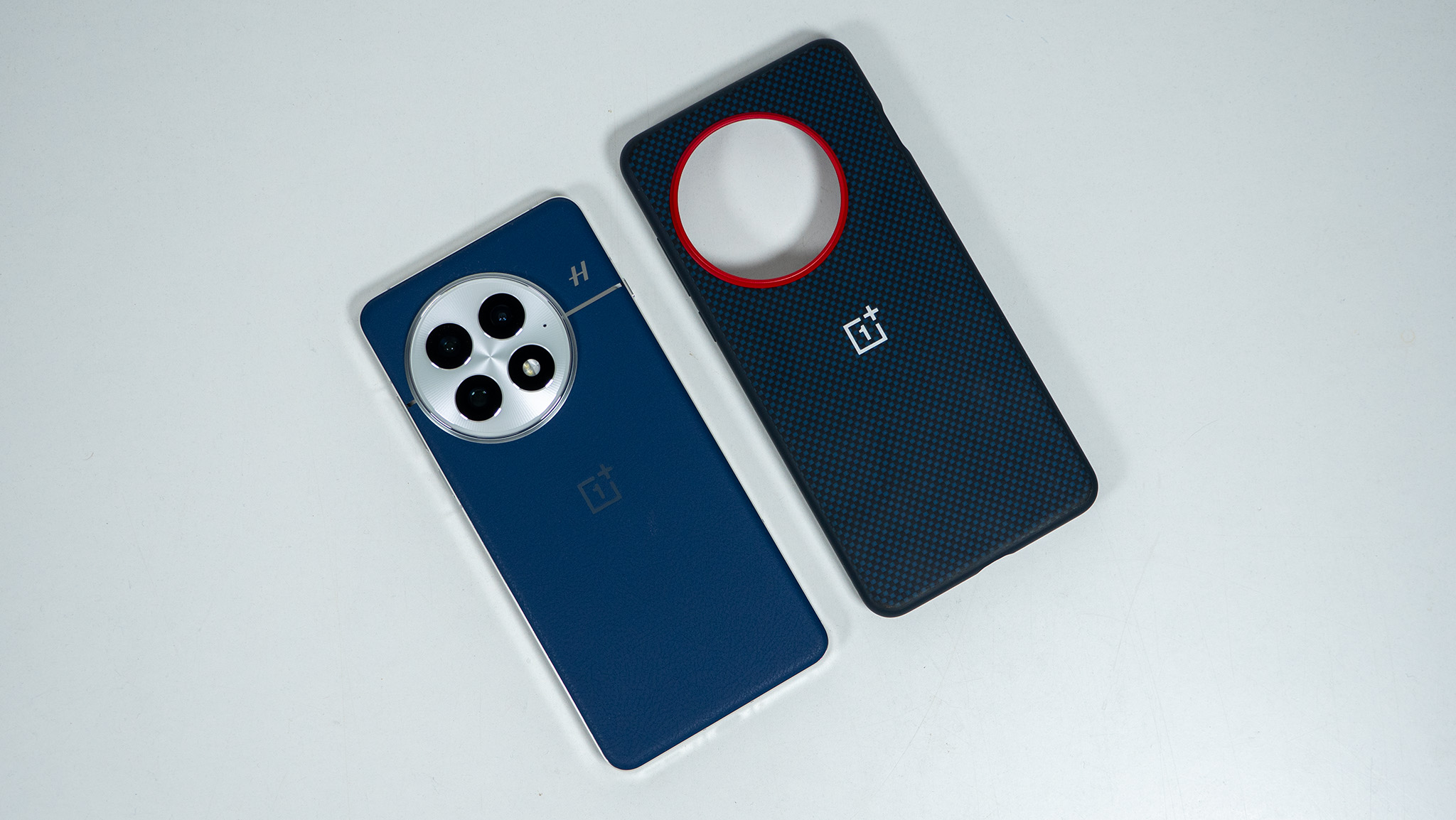
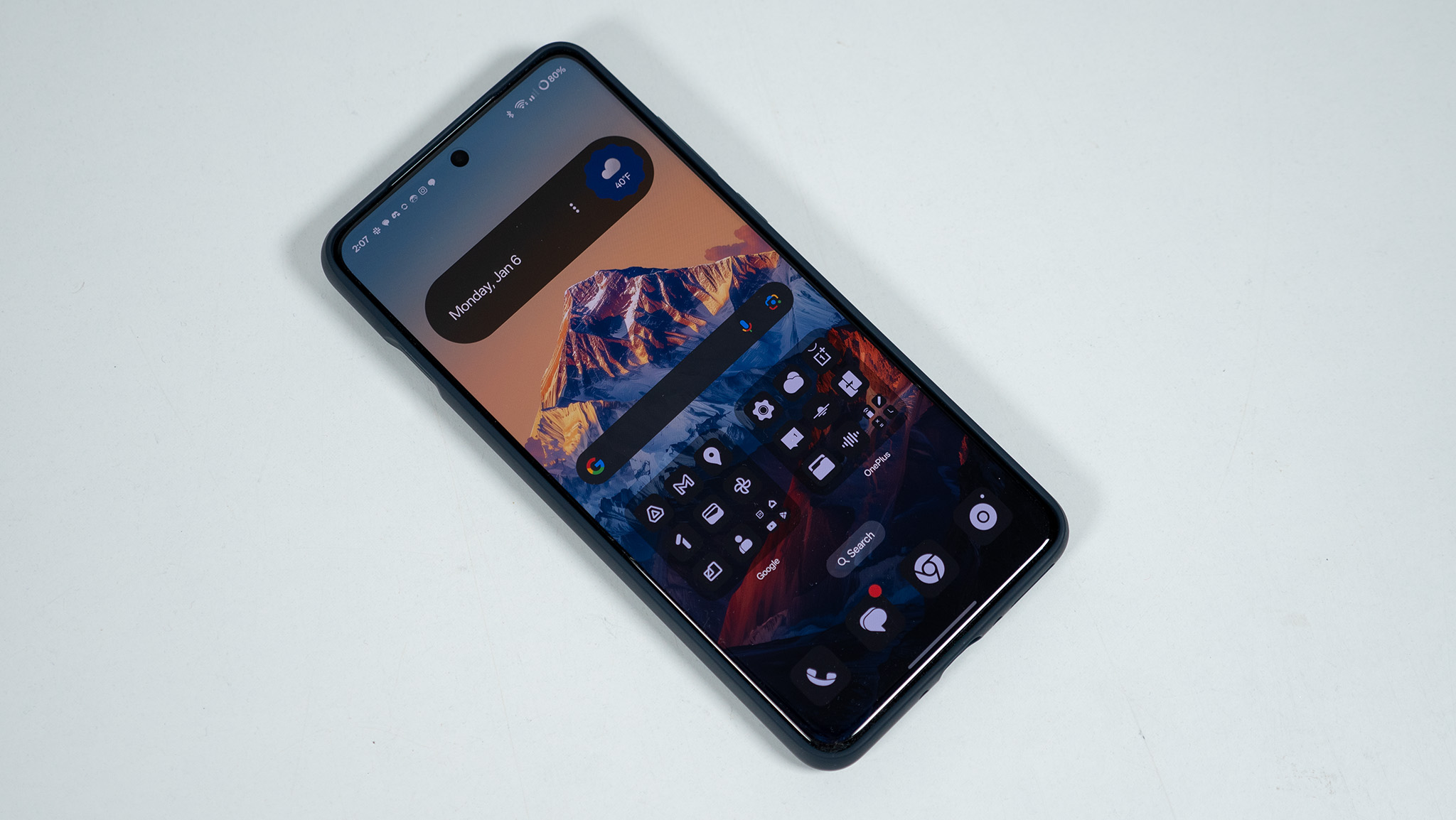
You'll still need a case to get full Qi2 support with MagSafe magnets.
My one disappointment with the hardware is the lack of integrated Qi2 support without a case. All of the official OnePlus 13 cases include magnets and full Qi2 support — even the full 15W wireless charging speed — but it's frustrating that no Android company can seem to get magnets in a flagship phone, even in 2025. OnePlus obviously isn't alone here, and, to the company's credit, it is the only brand selling official cases with Qi2 support at the time this review was written.
Before we leave the topic of cases, if you pick up a OnePlus 13 this year, be sure to check the compatibility with the case you want before you buy it. All of the official OnePlus cases come with a small insert that helps close the gap between the Arctic/Black colorways and the Ocean blue one — remember, the blue OnePlus 13 is a little thicker because of the vegan leather — which means some cases potentially will look a little off.
OnePlus 13: Display
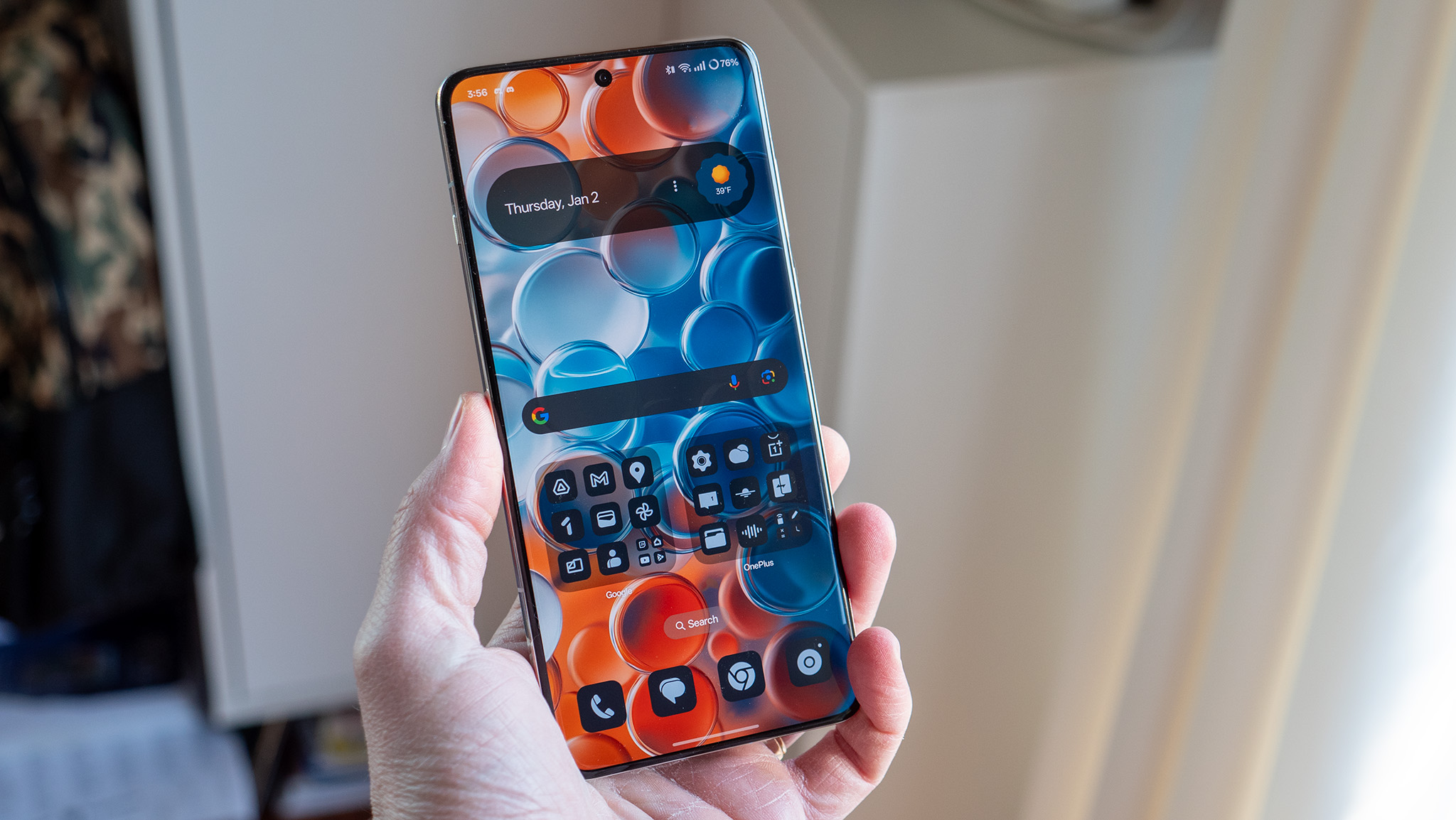
The OnePlus 13 features the best display of any phone on the market — an award that regularly changes hands every few months but feels more important on this phone than some others. Notably, OnePlus doesn't use a Samsung display. While many consider Samsung AMOLED panels to be "the best" for image quality, Samsung has been slipping over the past few years.
The OnePlus 13's OLED panel has not only achieved the first-ever DisplayMate A++ certification thanks to its new extra-high brightness RadiantView mode, but it also achieved the more important TÜV Rheinland Intelligent Eye Care 4.0 certification. Phones like the Pixel 9 Pro might have a brighter standard output, but they don't achieve that in a way that's safe for your eyes, leading to PWM dimming sensitivity in people like me.
The phone uses a true 10-bit panel and doesn't dither, helping to further seal its eye-friendly certification. Dithering is used when a display tries to show a color it isn't physically capable of, so it flashes a pixel between two colors very quickly to trick your eyes into seeing a color that doesn't exist. Think of it like a spinning color wheel from the elementary school days. Needless to say, this type of flickering hurts some people's eyes and can cause headaches, but the OnePlus 13 is free from such nonsense.
This is the best smartphone display ever made and it achieves display excellence without sacrificing eye health, unlike Samsung or Pixel phones.
When you step into the sunlight, the OnePlus 13's RadiantView sunlight display algorithm kicks in to boost brightness beyond what other phones on the market offer. Samsung famously added an anti-glare layer to its screen on the Galaxy S24 Ultra to help with sunlight visibility, but the OnePlus 13 is even easier to see in sunlight despite not sporting this layer.
I tested this myself on a sunny beach in the Bahamas, so I know it's not just marketing fluff.
The display itself is fully flat, but the glass surrounding it has a quad-curved edge. That means some tempered glass screen protectors will be fully flat while others add on a tapered edge. I'll be testing several different tempered glass screen protectors as soon as they arrive, but know that the OnePlus 13 comes with a pre-installed film-type screen protector to keep it from getting scratched.
Even without a screen protector, OnePlus says it chose Ceramic Guard glass over Gorilla Glass because it offers better scratch and drop protection.
The OnePlus 13 has the only ultrasonic fingerprint sensor that's ever worked well for me.
Under the display is a new ultrasonic fingerprint sensor that replaces the optical sensors OnePlus has used since the company's first phone. I typically loathe ultrasonic sensors as they don't work well for me and I've noted this on every phone I've reviewed with an ultrasonic sensor over the past few years. I can thankfully say that the one on the OnePlus 13 doesn't suffer from the same problems.
Thus far, I've only had one or two instances where dry winter skin affected unlocking performance for me. Meanwhile, the Galaxy S24 and Pixel 9 series regularly have trouble reading my fingerprint even in the warm months. Ultrasonic sensors also have the ability to read your fingerprint when it's wet, so no need to dry your hands when cooking if you need to unlock your phone.
OnePlus 13: Battery life, charging, and performance
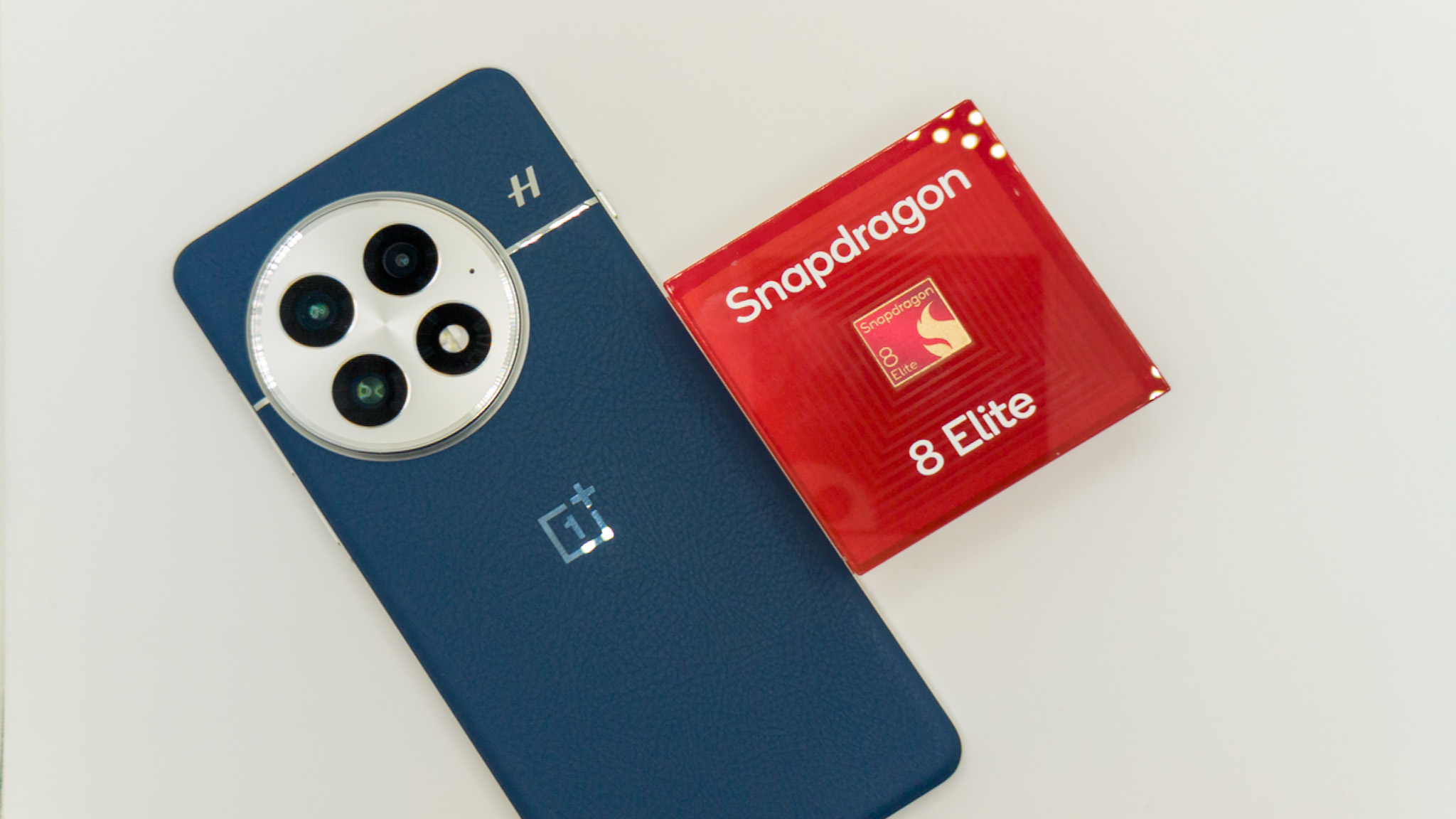
One of the foremost reasons people have chosen OnePlus phones in recent years is because they feature the fastest charging speeds available. Battery anxiety completely disappears with a phone like the OnePlus 13 because you don't need more than 15 minutes to top up your battery thanks to the company's SUPERVOOC 80W charging capability.
OnePlus still includes a charger in the box, meaning you won't have to spend another $50 on something that'll give you full speed. It's yet another reason OnePlus offers better value than other companies, and it ensures you get the best experience out of the box. I always seem to underestimate just how fast this phone charges and am constantly surprised when I plug it in for 10 or 15 minutes and see that it's already in the 80% range.
If you've never used a OnePlus phone before, you're going to be absolutely blown away by not only how good the battery life is, but also by how fast it charges.
To help with battery safety and longevity, OnePlus has not only packed 14 temperature sensors into the phone but has improved its battery by including 10% silicon content. That makes it a 5.5% denser battery than the OnePlus 12, allowing the company to make it 600mAh larger while still reducing the physical size and weight of the battery.
If you've never used a OnePlus phone before, you're going to be absolutely blown away by not only how good the battery life is but also by how fast it charges. It puts every leading flagship phone to shame, and I can guarantee you'll never want to go back to a Samsung, Apple, or Google phone again after this.

The OnePlus 13 is more than twice as fast as the Google Pixel 9 series and thermal management makes it the fastest Snapdragon 8 Elite phone available today.
As I noted previously, I took the OnePlus 13 into a 155f/68c sauna for an extreme 30-minute gaming stress test. Even though it was in a case — something that usually hinders thermal management — the phone never got above 50c even though the environment around it was 68c.
I also have never seen the phone falter once in its impeccable performance, whether that's normal day-to-day scrolling or playing games at 120FPS. Multitasking is the best I've seen among any flagship phone, including a multitasking UI that makes it easy to quickly switch between apps faster than any other phone I've used.
| Row 0 - Cell 0 | Single-core | Multi-core |
| OnePlus 13 (Snapdragon 8 Elite) | 2893 | 9058 |
| Apple iPhone 16 Pro Max (Apple A18 Pro) | 3386 | 8306 |
| Asus ROG Phone 9 Pro (Snapdragon 8 Elite) | 2012 | 8076 |
| Samsung Galaxy S24 Ultra (Snapdragon 8 Gen 3) | 2300 | 7249 |
| Google Pixel 9 Pro XL (Google Tensor G4) | 1929 | 4747 |
A row of app icons on the bottom of the Recents screen makes it possible to instantly move between 7 apps at a time, feeling more like desktop OS taskbar efficiency rather than the bumbling UI Google typically uses in stock Android and on Pixel phones.
OnePlus has also added the fantastic Canvas functionality from the OnePlus Open foldable, making it easy to run an app in nearly full screen with a second app "in waiting" for extremely efficient 2-app multitasking. This is better than traditional split-screen multitasking on a phone because the main app takes up most of the display rather than being cut in half.
OnePlus 13: Cameras
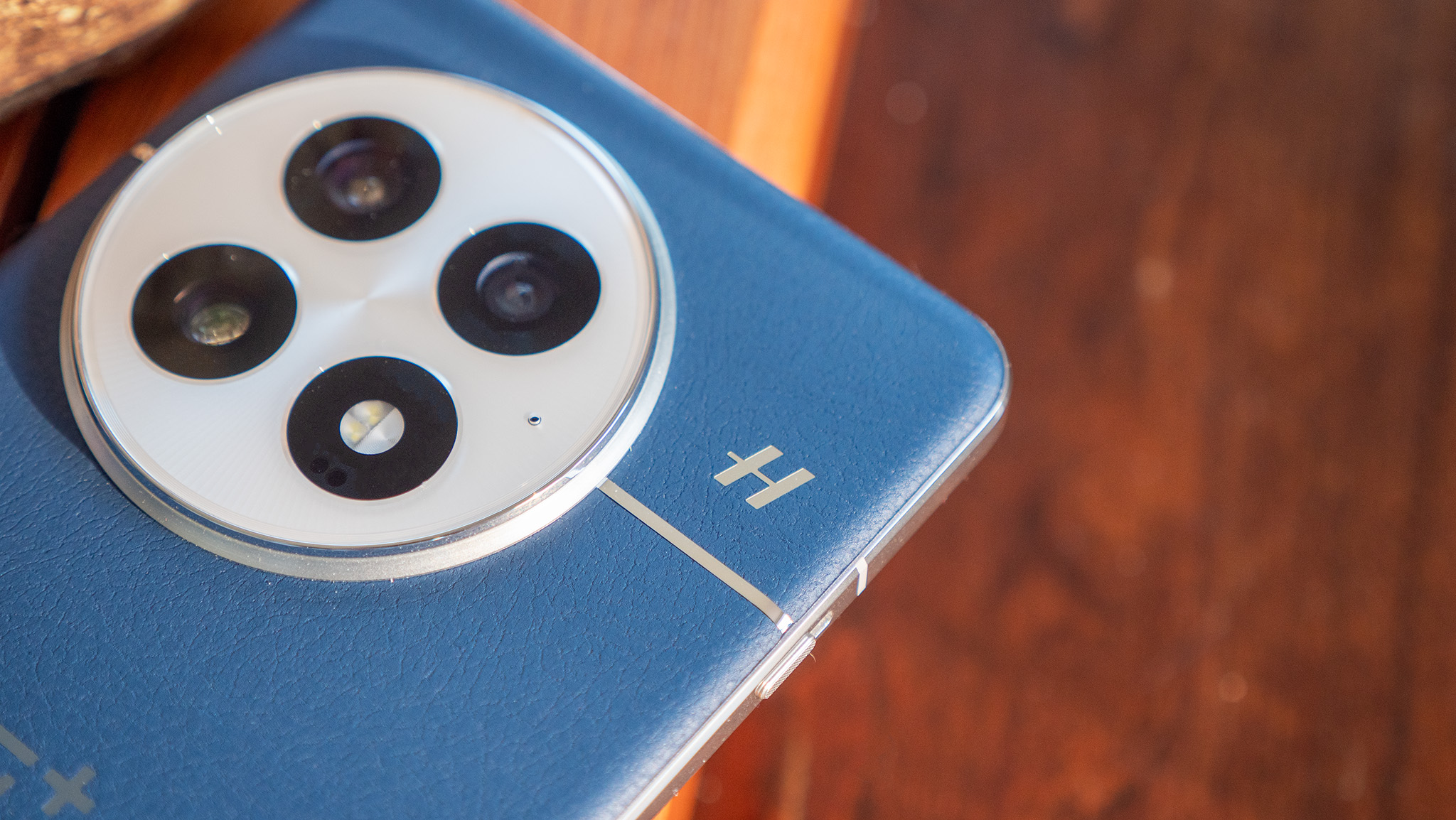
For ages, OnePlus has lagged behind the pack with its smartphone cameras. That all changes with the OnePlus 13. It's not only the first OnePlus phone I think is worthy of the Hasselblad branding — despite this being the 5th year OnePlus phones have donned the "H" — but it's easily one of the best smartphone cameras I've ever used.
It's also the first time I could use a OnePlus phone and not feel like I need to take along a second phone to ensure I get the best photo. In fact, most of the photos in this review were taken from a OnePlus 13 using the phone's RAW photo option.
This phone's camera goes toe-to-toe with the best from Google, Samsung, Apple, Honor, and Vivo in every category, and it's downright incredible to see OnePlus make such a huge jump in quality in a single generation. Some of it is down to the new Sony LYT camera sensors used in the main and telephoto cameras on the back, but a lot of it has to do with software.
OnePlus is introducing a brand new dual exposure algorithm that is used with every single capture and shines in HDR and motion capture. Considering these were the only two real weak points of the OnePlus 12's camera, it's good to see that OnePlus focused on these areas so much.
This is the first time I felt like a OnePlus phone was worthy of the Hasselblad camera branding.
Dual exposure powers the upgraded action mode, which can capture moving subjects just as well as a Pixel or Honor phone, both of which hold the crown in moving subject capture. This is a massive step forward for the company and solidifies the feeling that you can finally consider a OnePlus phone if a good camera is the main reason you choose your smartphone.
OnePlus says it's best to hold down the shutter button to get a burst of photos with the company's new Clear Burst algorithm, but I've found that the AI-based processing model does an excellent job of automatically picking the best photo even when you just tap the shutter button once.
If you take a picture and tap the preview image fast enough, you'll often be able to see the image processing quickly and choose the best photo for the end result. Holding down the shutter button gives you more manual control and lets you choose from a selection of burst shots if you prefer that.

Take this example above, which is easily one of the best photos I've ever captured with a smartphone camera. This bowling alley is in a dimly lit bar in downtown Asheville, which is already a tough environment for a smartphone camera. Most phones would overexpose this image and make it look like mid-day. Not the OnePlus 13, which absolutely nails the exposure and captures the mood perfectly.
Then, there's the bowling ball in the middle of the image. It was traveling down the lane when I captured the shot, but unlike most other smartphones, the ball is perfectly crisp, and the moment is enshrined in the image to utter perfection.
I've been blown away by the camera quality of the OnePlus 13, which now tops the best Android camera experiences available.
But it's not just moving image capture that has improved. Both the main and telephoto cameras deliver an exceptional experience that has delighted me constantly over the past few weeks as I've taken this phone to the Bahamas, on snowy hikes, and to several different Christmas light shows and events.
Telephoto performance is truly exceptional using the new Sony LYT-600 sensor and OnePlus's new flat Triprism lens. This lens is 24% smaller and 30% lighter than the OnePlus 12's design, all while delivering better results. As is the case with most phones, 30X zoom is where you should stop if you're concerned about the best quality, but OnePlus offers up to 120X zoom if you're feeling really lucky.
There wasn't a single category where I saw the OnePlus 13's camera falter. Whether I was taking a wide-angle low-light photo of a twinkling downtown Asheville intersection, a portrait shot of the fancy mermaid Santa glass I got at a tiki bar, or selfies of my wife and me on a Royal Caribbean cruise, I was amazed at the quality on display from this phone.
I'll have a more detailed camera review that breaks down every nook and cranny of the phone's camera performance, but for the time being, here are some of my favorite shots taken with the phone in the past three weeks.

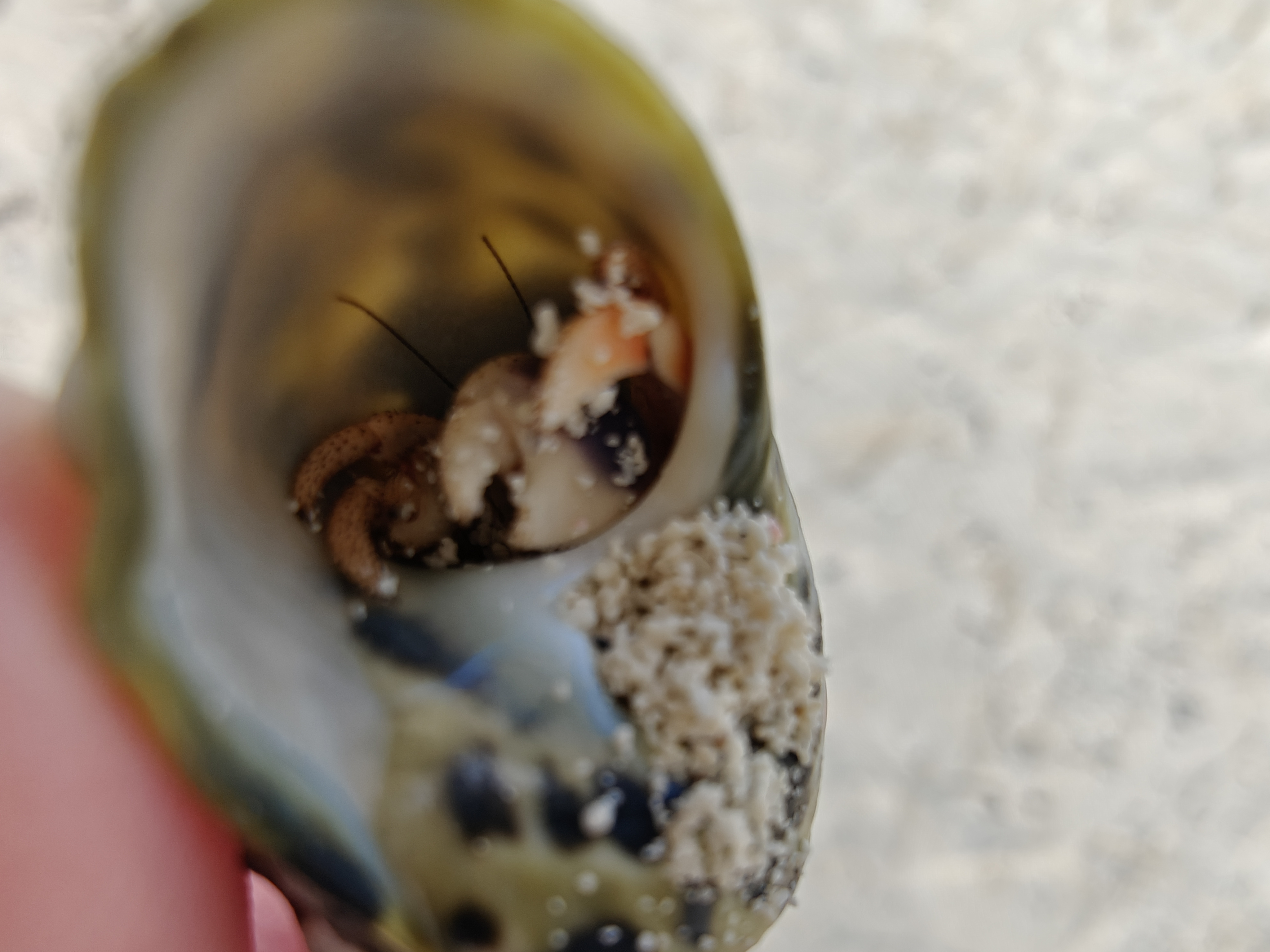




Motion capture is top-notch, going toe-to-toe with Pixel and Honor phones for the first time ever.
The OnePlus 13 also offers OnePlus the opportunity to further improve its camera software and UI. A new scene selection mode lets you choose from Stage, Silhouette, and Fireworks scenes to best optimize the shot you're going for. It's not exactly an extensive list, but these quick selections do come in handy if you're at a concert or trying to take specific types of photos.
Action mode and motion photos are also improved, with action mode sporting a 60FPS viewfinder and improved capture time that's twice the speed of the OnePlus 12 in my tests.
The OnePlus 13 is one of the only phones that still offers 480FPS slow motion video, while most "flagships" stop at 240FPS. Even Samsung abandoned its 960FPS modes last year and hasn't bothered offering anything better, although the company's instant slow-mo feature (powered by AI) is a ton of fun to use.
All four cameras support 4K Dolby Vision HDR capture, and a new flat telephoto lens delivers better quality at a reduced footprint.
You'll find 4K Dolby Vision HDR video capture on all of the phone's cameras, including the front camera. That makes it possible to select the quality you want without having to worry about which camera can make use of it. Many phones still only offer specific quality selections for the main camera, and this can be confusing.
OnePlus has also drastically improved its real-time zoom algorithm and now sports virtually no pop-in when zooming between cameras. I've found that if you zoom in or out too quickly between cameras after starting a video, you'll see a brief transition between lenses, but that goes away after a few seconds. Most phones still struggle to offer truly smooth transitions between lenses like this, and again, it's great to see OnePlus work on an annoying weak point like this.
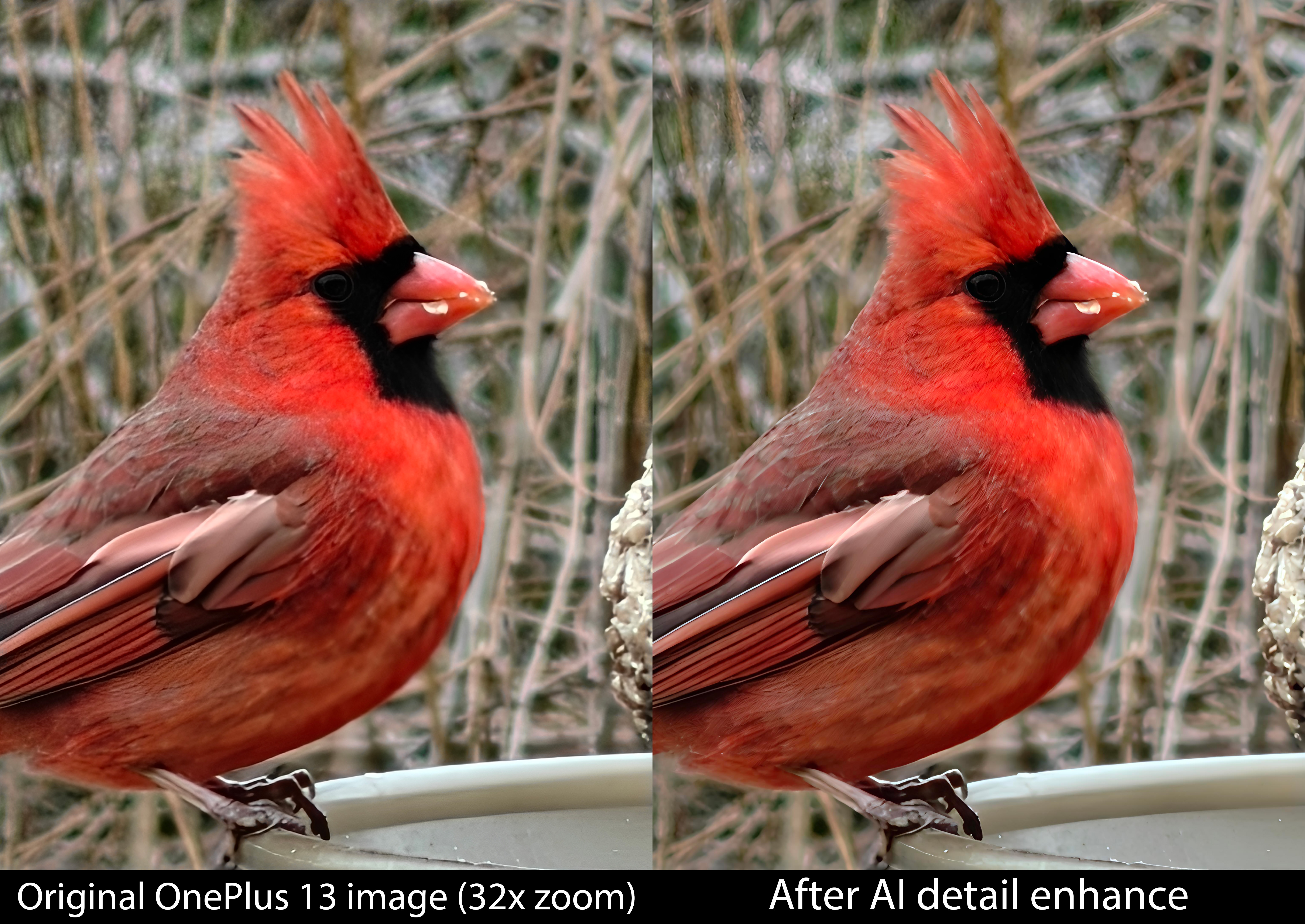
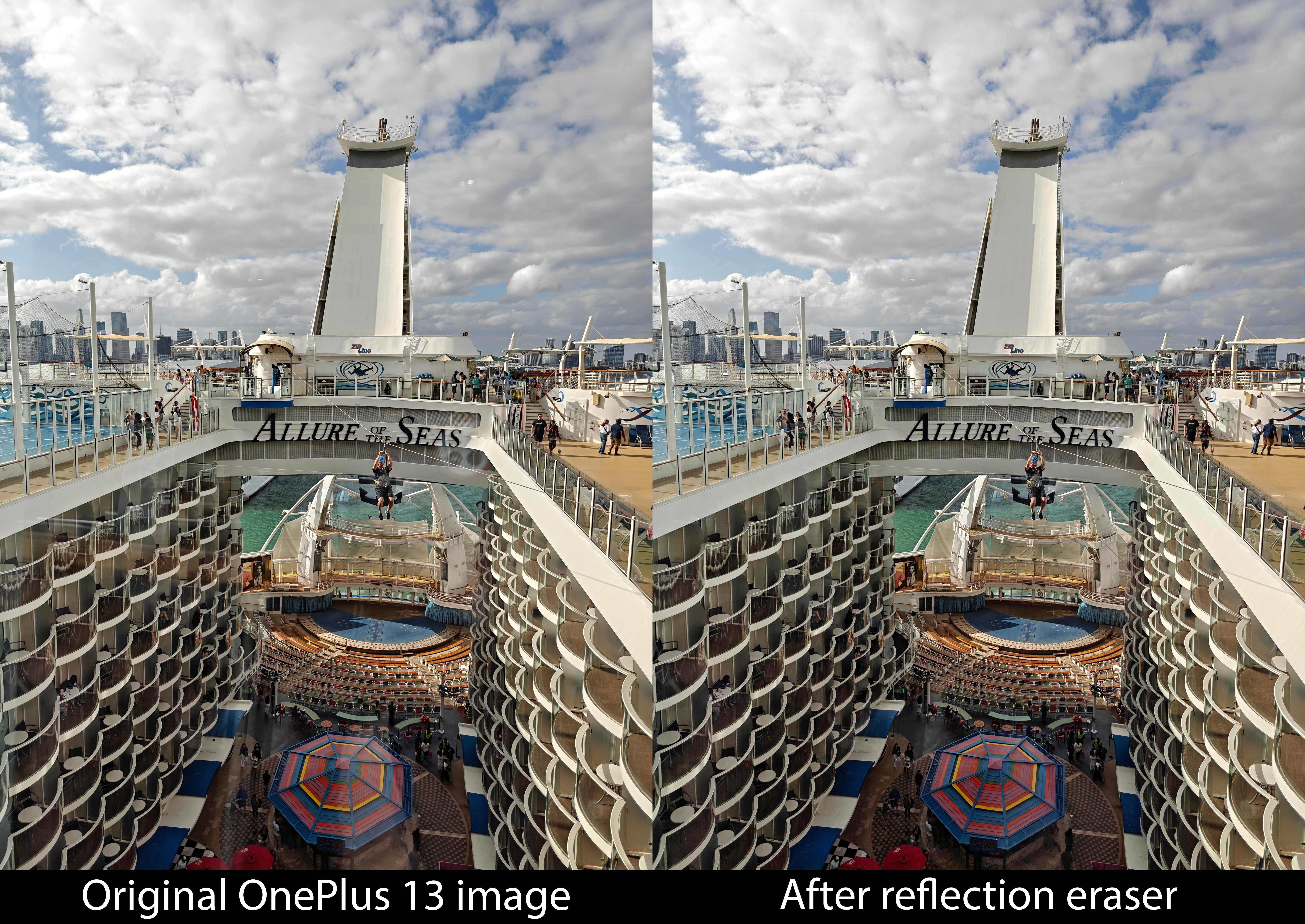
OnePlus didn't spend too much time talking about AI in its presentation for the phone, but it did (rightfully) highlight the AI features found in the phone's gallery app. As Android Central's Accessories Editor, Namerah Saud-Fatmi, found out last October when she pitted OnePlus's new AI features against Google's famous Magic Eraser, OnePlus doesn't just hold its own — it actually does things better than the competition.
Not only that, but OnePlus does a better job of surfacing these features than Samsung, matching Google Photos' clever methods by adding a dynamic button for recommended AI features when scrolling through photos. Features like AI unblur are suggested on photos that have obvious blurring.
Thankfully, because of the excellent motion capture, you won't have to do this very often, but you can always touch up old photos with OnePlus' excellent AI solutions.
OnePlus 13: Software
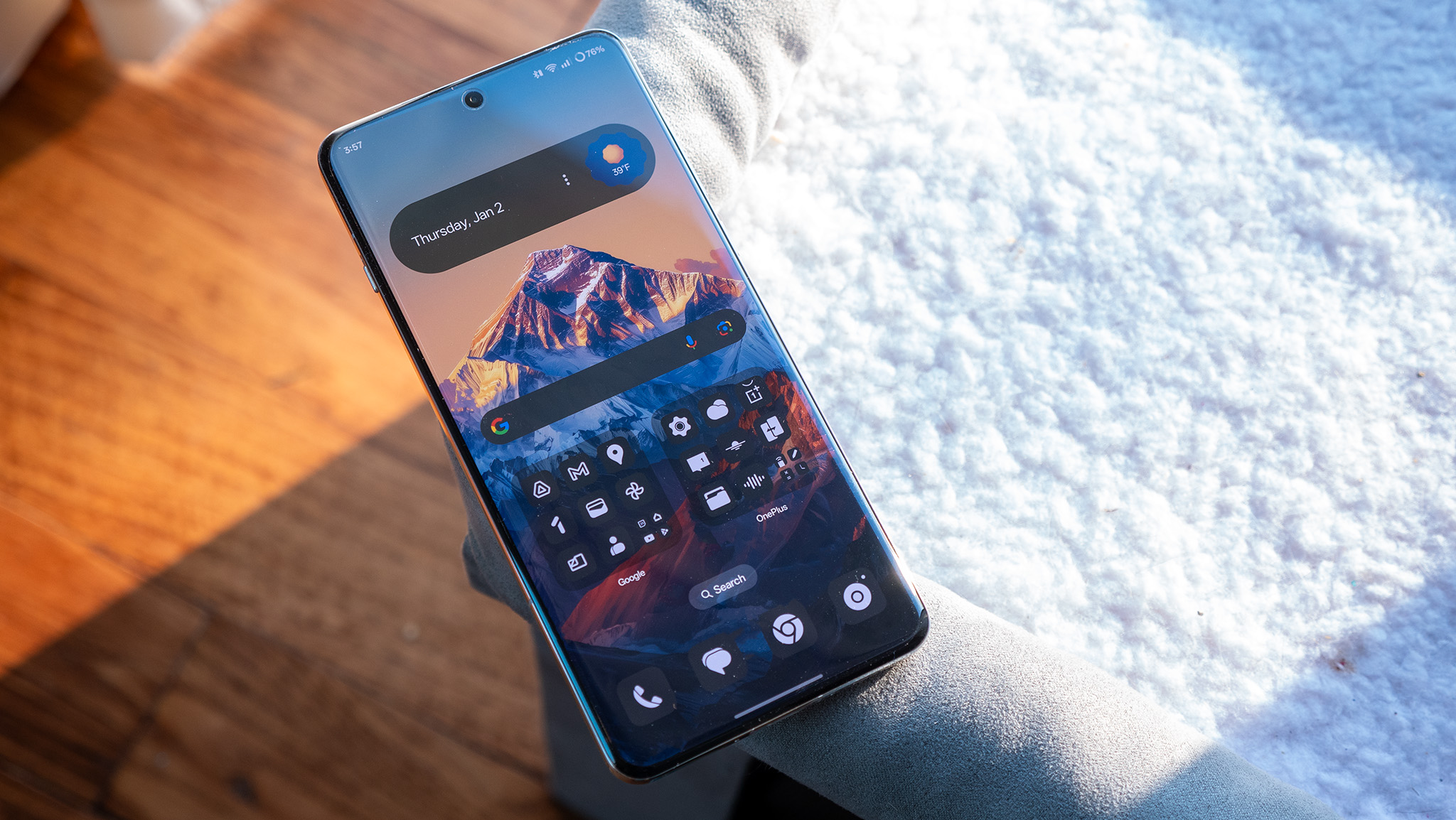
The OnePlus 13 launches with the Android 15-based OxygenOS 15, which sports an identical feature set to Oppo's Color OS found on phones like the OPPO Find X8 Pro. Oxygen OS 15 has been available on the OnePlus 12, OnePlus 12R, OnePlus Open, and several other OnePlus phones for around 2 months now, so most of the feature set isn't anything new.
In summary, you'll get one of the best Android UIs available today, including tons of customization options, cleverly designed UI elements and buttons that make it easy to find what you need quickly, and unique elements like the OnePlus Shelf on the home screen that you may or may not use (I don't).
OnePlus also introduced many AI features with Oxygen OS 15, like AI writing help, photography enhancement tools — not generative AI stuff like Samsung and Google have done — and handy tools like Google's Circle to Search. Most of these things are expected in modern phones, but I'm happy that OnePlus isn't constantly pushing them in our faces like some other companies have.
Oxygen OS 15 is the epitome of an excellent version of Android, but I want to see more AI features with offline capabilities.
My biggest critique of these tools isn't their functionality. They actually work incredibly well and often better than on other phones. The issue is that nothing is done locally; instead, all of these AI tools run via cloud computing. That means there's no way to run them without an internet connection and no guarantee they'll still be available six years down the road when OnePlus ends software support for the phone.
OnePlus says it will likely move the most popular features to local computing down the road once it identifies the ones people enjoy using often. I'd rather see the company go local first and offer cloud services for better speed or accuracy, but OnePlus says it went this route because it makes it easier to scale functionality at a better cost.
Regardless of where AI computing is done, OxygenOS 15 remains my favorite Android flavor on the market today. It's packed with incredible features, has the best UI and multitasking, and somehow feels both fast and light despite being feature-rich.
OnePlus 13: The competition
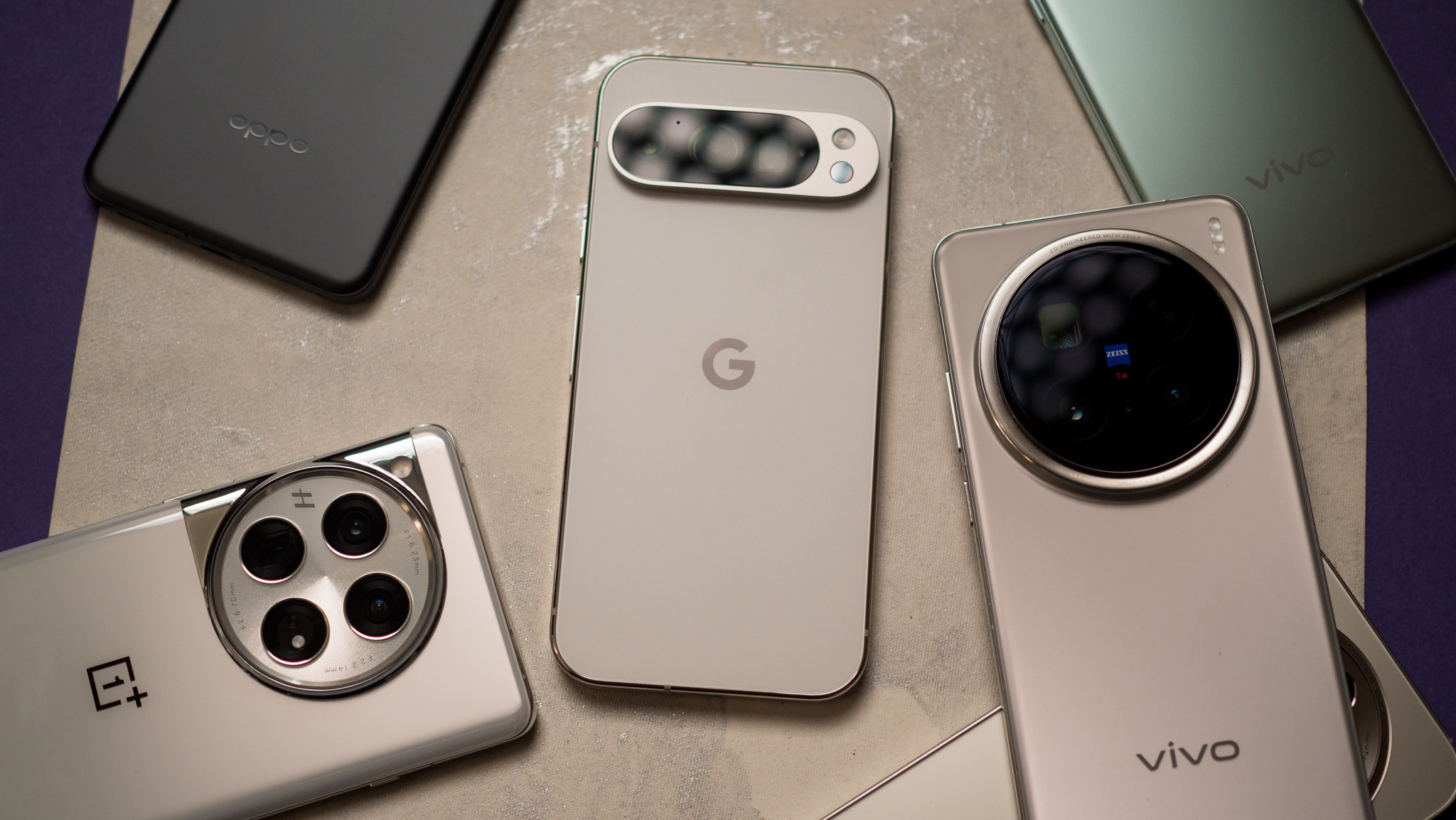
OnePlus's most direct competition in the U.S. is the Google Pixel 9 Pro and Samsung Galaxy S24 Plus. Both phones retail for the same price but offer less RAM and less storage. Additionally, both are slower — significantly more so in the Pixel's case — both offer worse displays that are harsher on your eyes, and Samsung's haptics feel downright pitiful compared to Google or OnePlus's.
Charging speed is also embarrassingly slow on Samsung and Google phones compared to OnePlus, and battery life is better on the OnePlus 13 than either of these devices. The only real advantage of going either to Samsung or Google is that you'll get three more OS updates before you may want to buy a new phone. I'm not sure how many people actually hold on to phones for more than five years, but it's still an advantage Google and Samsung have for now.
Internationally, brands like Vivo offer a similar UI on some phones and may also offer slightly better cameras depending on what you like photographing. Overall, the camera improvements OnePlus made with the OnePlus 13 mean that even phones like the Vivo X100 Pro are outclassed in things like motion capture or video recording quality.
If price is the biggest concern, a OnePlus 12 can be had for a few hundred dollars less and offers many of the best features of the OnePlus 13. It isn't IP69 rated, its camera isn't quite as good, and the curved display certainly irritates some people, but it's blazing fast, offers incredible haptics, and sports all the best Oxygen OS 15 features the OnePlus 13 has.
OnePlus 13: Should you buy it?
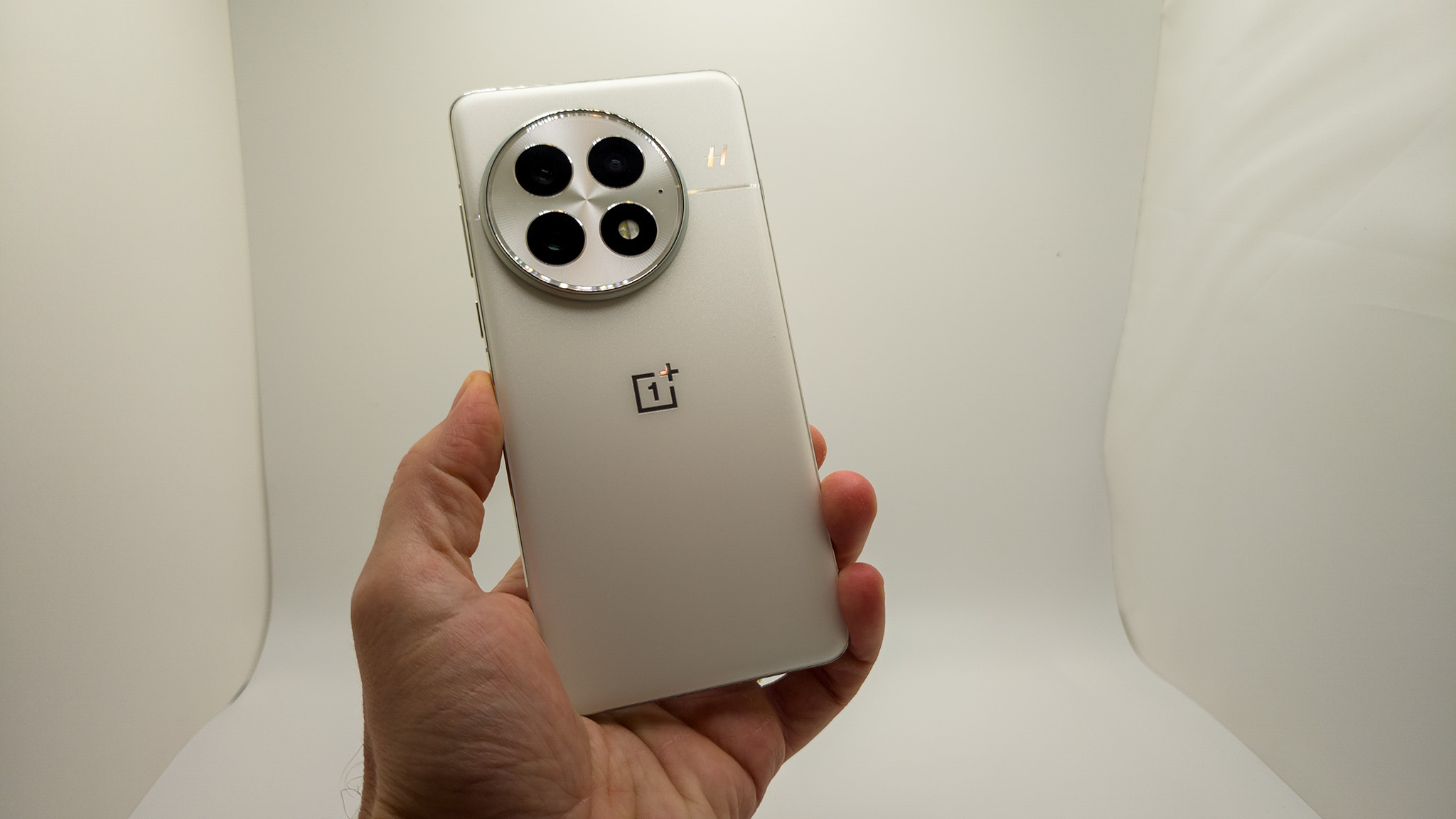
You should buy this if...
- You want a unique-looking phone that's built better than you thought a phone could be.
- You need an excellent camera experience that can capture kids and pets without blur.
- You're a power user who loves peak performance, multitasking, and thermal management.
- You're tired of battery anxiety on phones and want a phone that'll charge in just a few minutes.
You shouldn't buy this if...
- You want to use AI tools with offline functionality.
- You want to keep using your phone for more than 6 years with updates.
The OnePlus 13 is the best Android phone ever made. It's the only phone I've ever given a perfect review score because there's no area where the phone falters or needs real improvement. The hardware is as good as it gets, offering the best haptics, superior build quality, top-notch design, and unique features like the alert slider. It also has a display that's both best-in-class and safe for your eyes in the long term, unlike the competition in North America.
The value for the money still eclipses everything else in its class despite the $100 price increase over last year's OnePlus 12. More RAM and storage than the competition means it'll feel newer for longer than other phones, and the top-tier performance and multitasking will make any power user happy. Plus, there's simply nothing like the OnePlus 13's battery life or charging speeds.
The OxygenOS 15 software experience is the cream-of-the-crop Android experience, providing an intelligently designed UI with tons of features you'll actually want to use because they're easy to find — not hidden in tons of sub-menus or requiring additional downloads like some other brands. It's also not overly packed with useless AI bloat that you'd probably use once and forget about.
And let's not forget about the camera, which somehow meets and even sometimes beats the best on the market. It's a position I never thought I'd see a OnePlus phone in, yet the OnePlus 13 sports a camera that everyone will love to use all day. The OnePlus 13 is a triumph of a phone that everyone should consider, and it's almost certainly the 2025 phone of the year despite launching in the first two weeks of January.
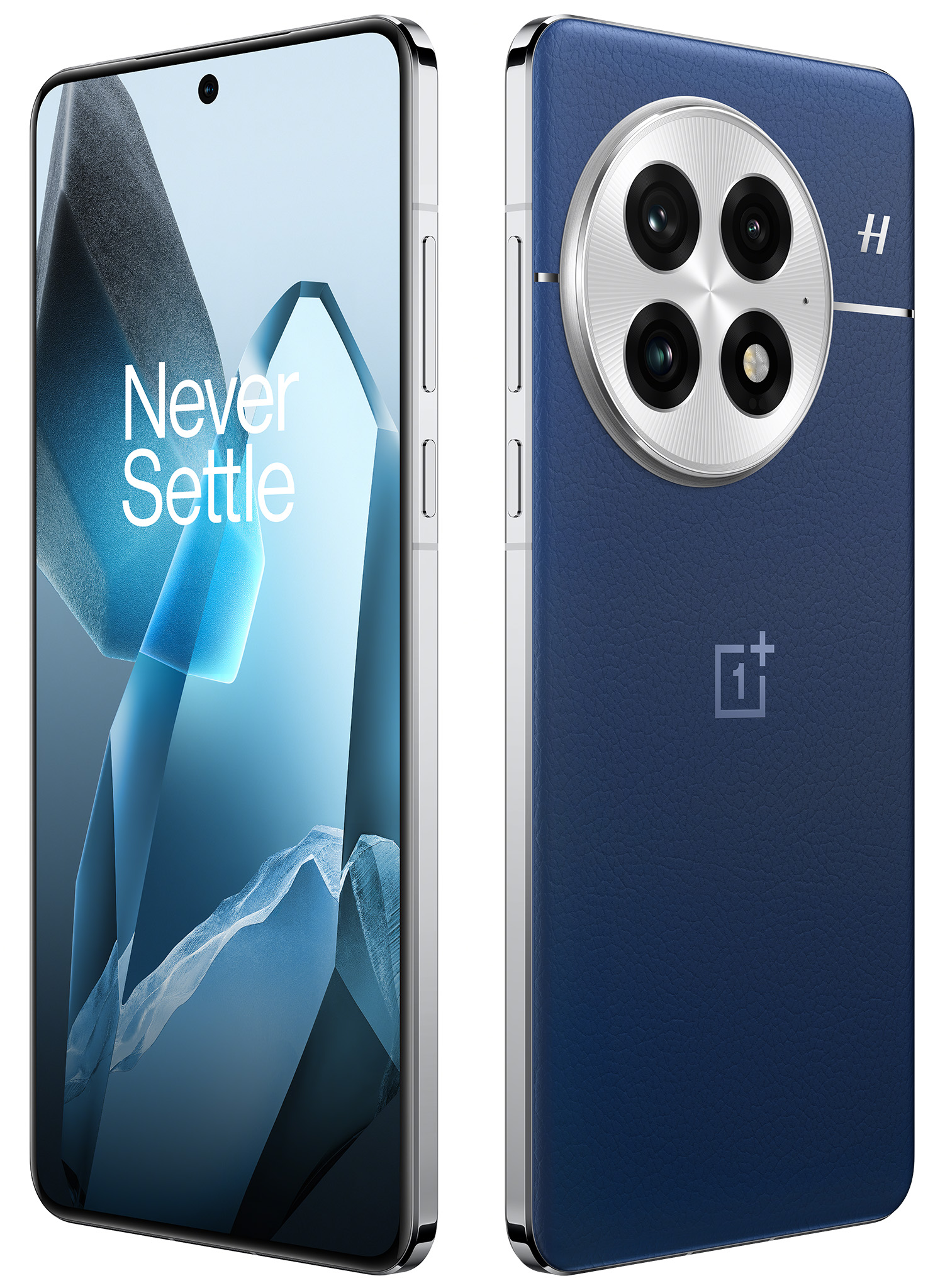
The OnePlus 13 is the best Android phone ever made, with uncompromising design and build quality, top-tier performance, features you'll love using, and a camera that'll make you smile day or night.
Best Buy: free storage upgrade, $100 gift card with the OnePlus 13

You must confirm your public display name before commenting
Please logout and then login again, you will then be prompted to enter your display name.
